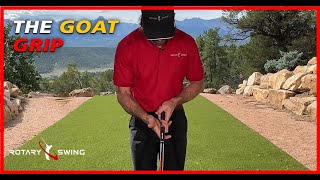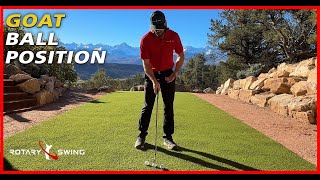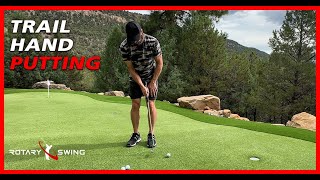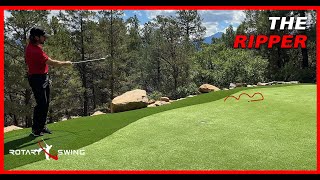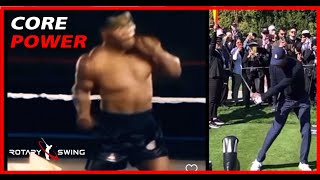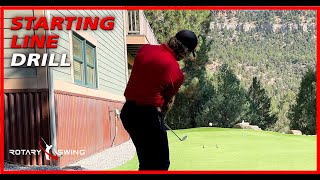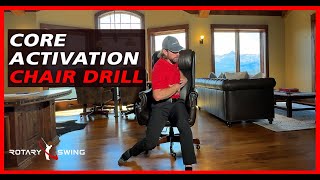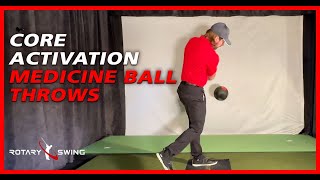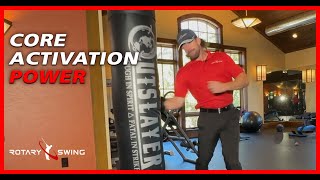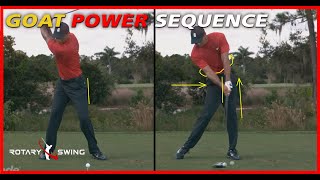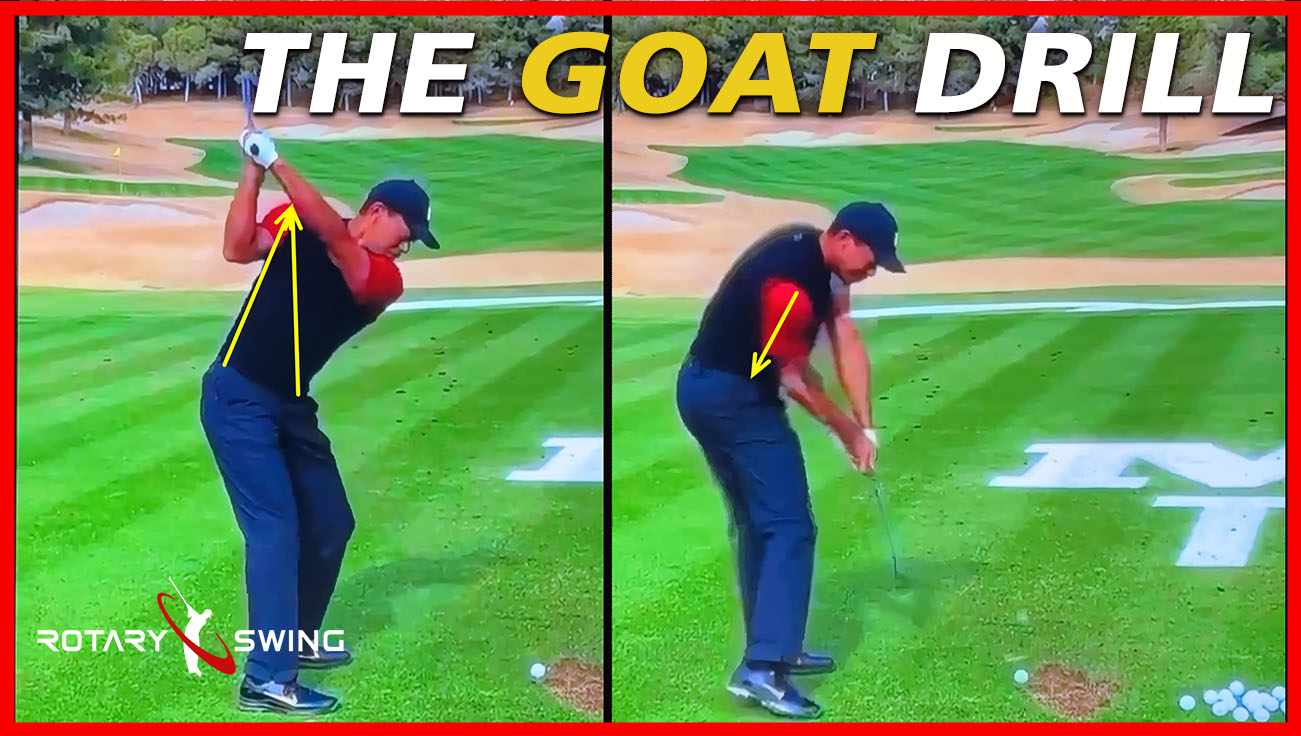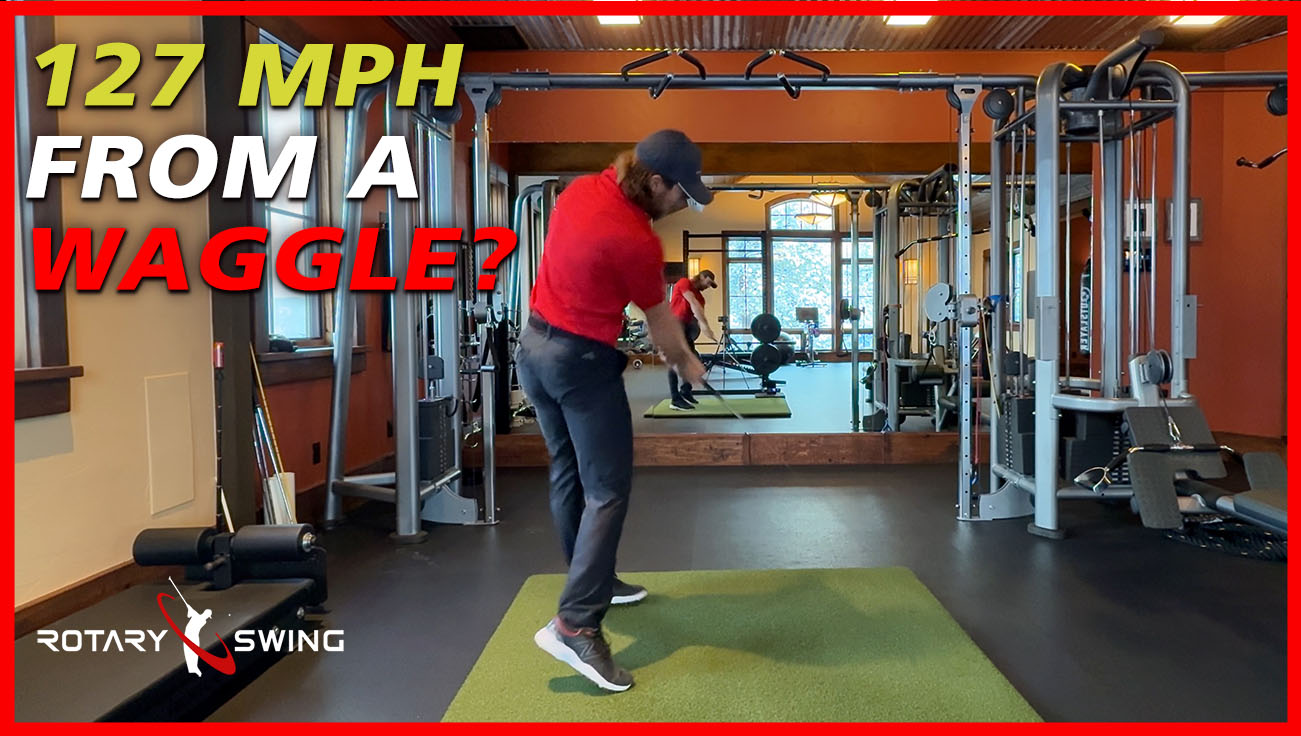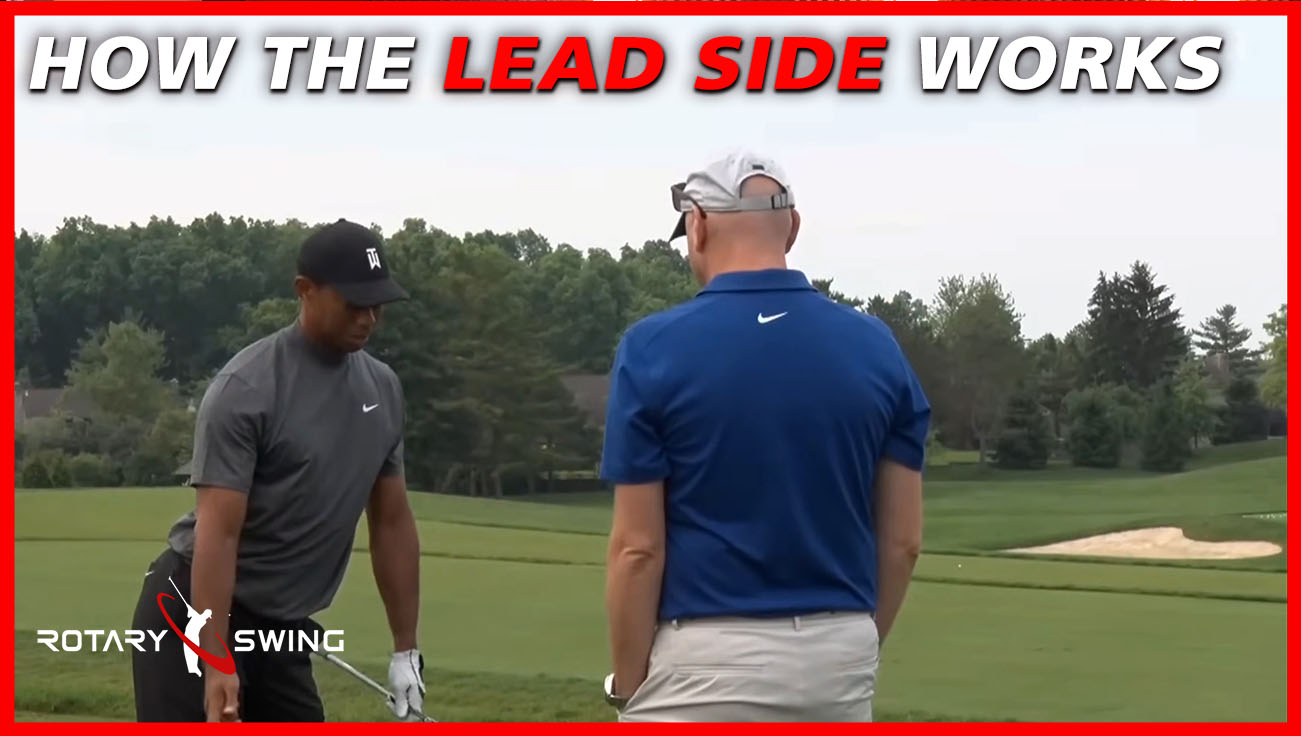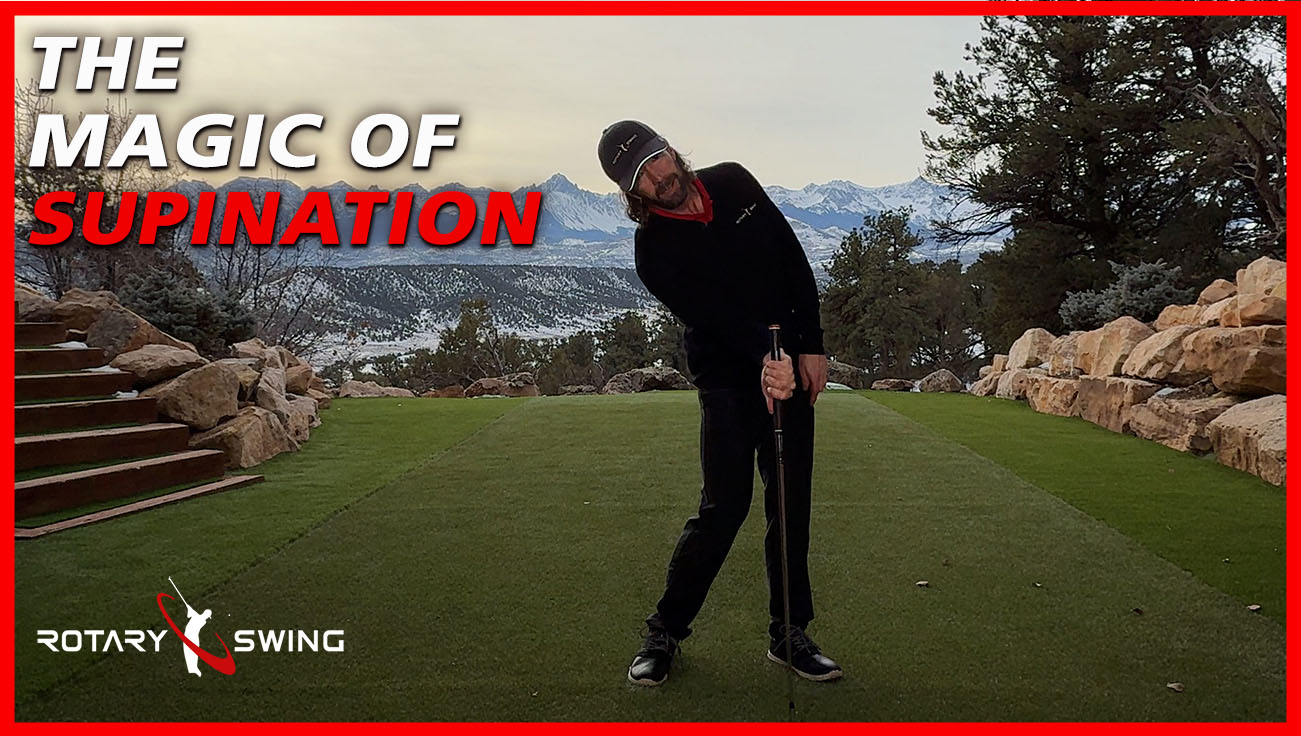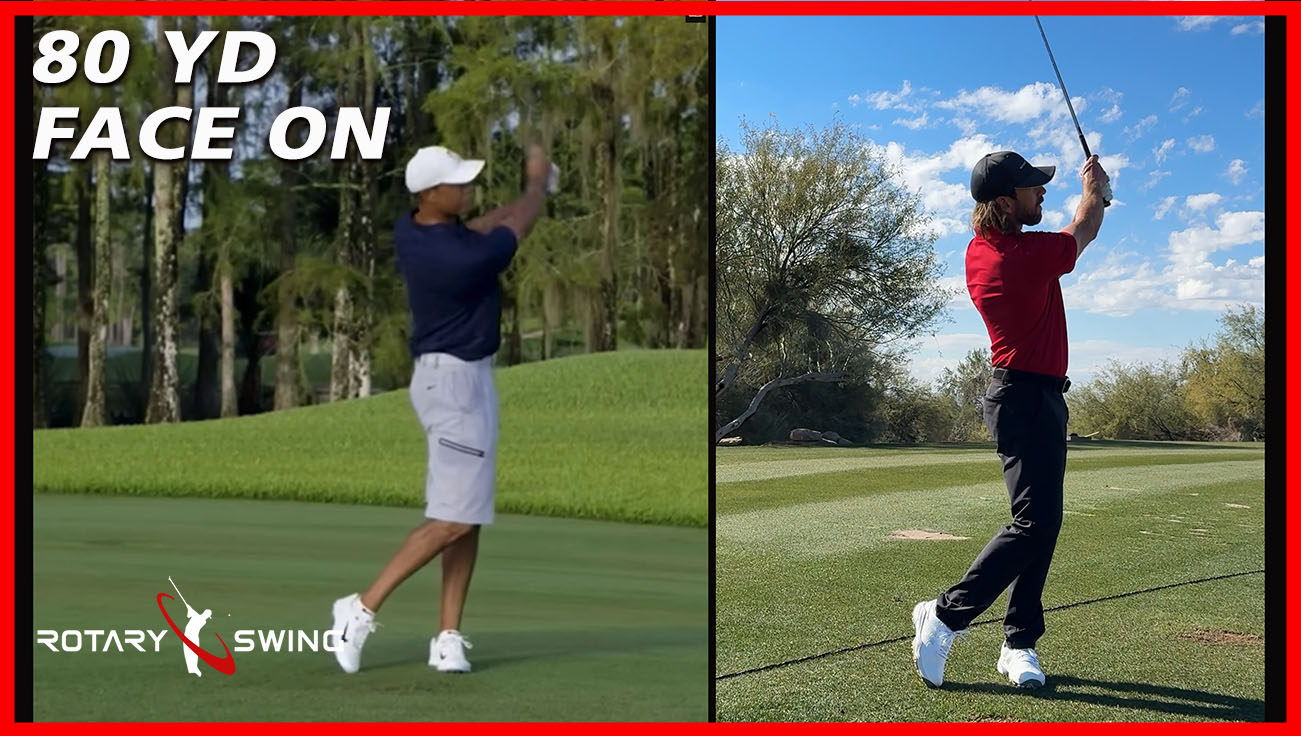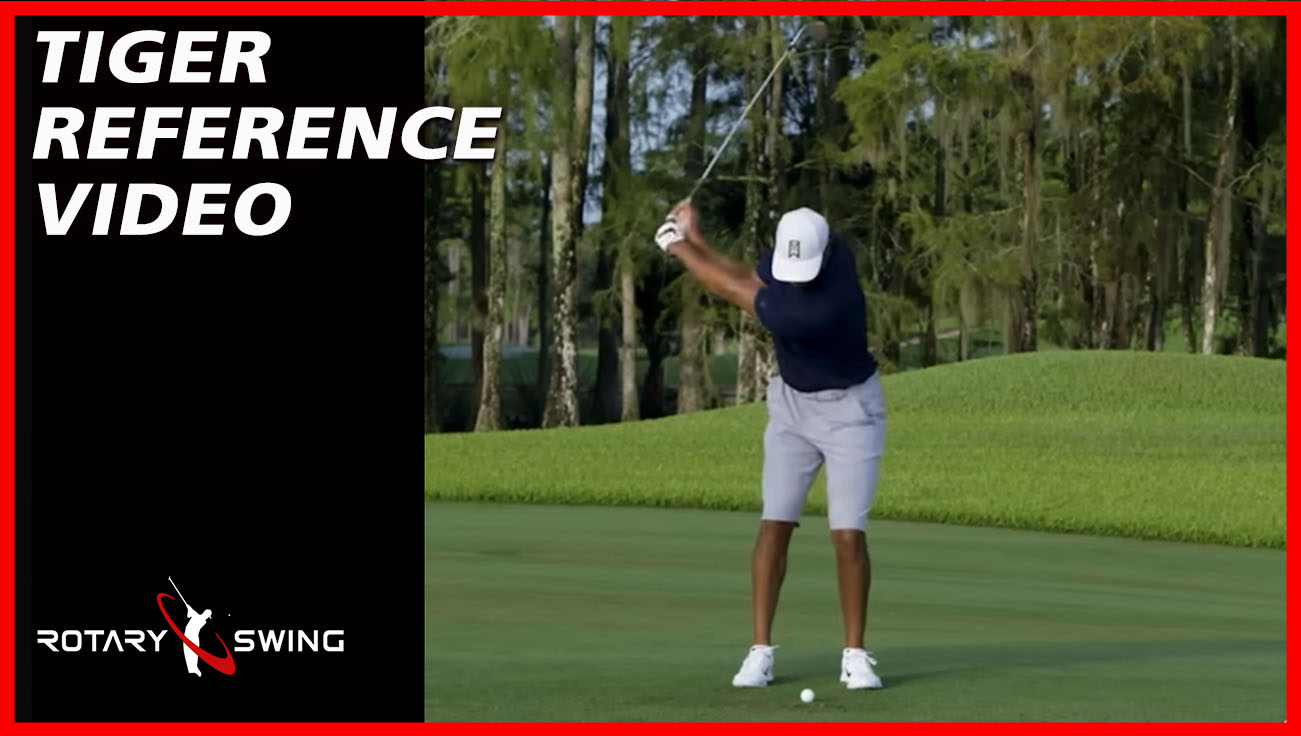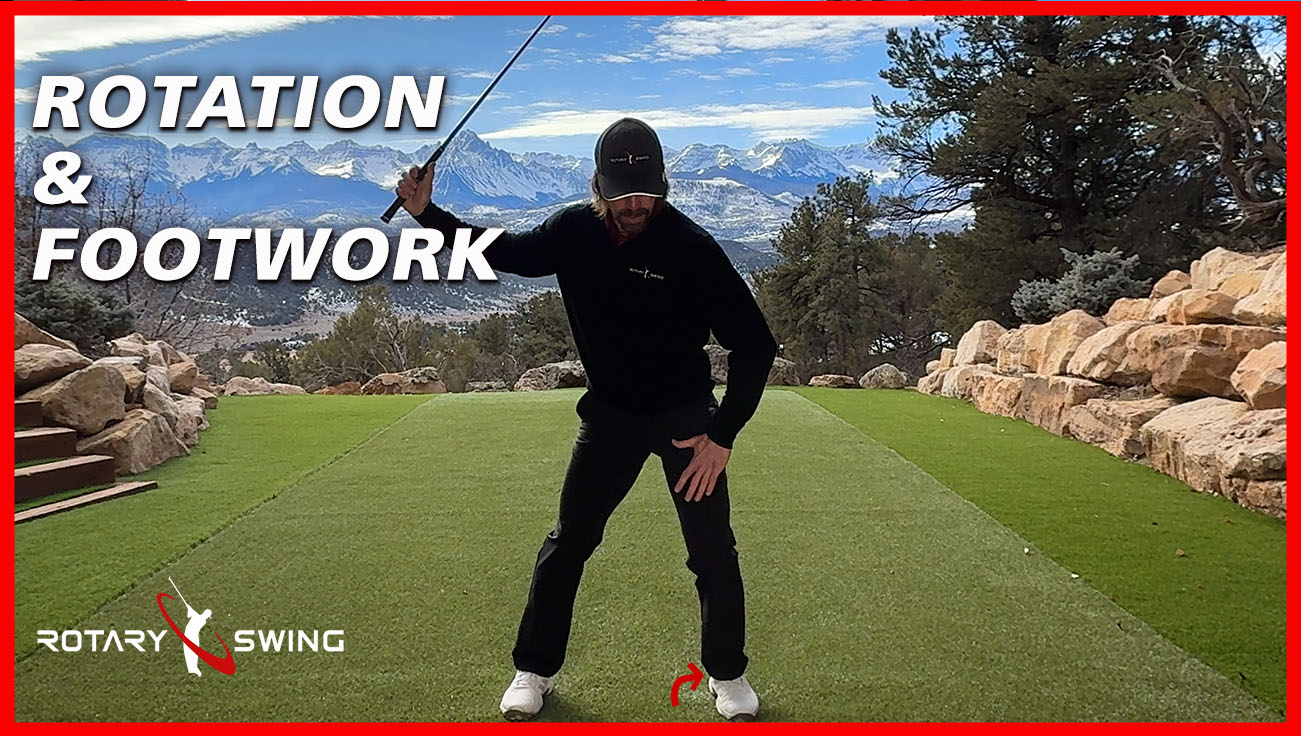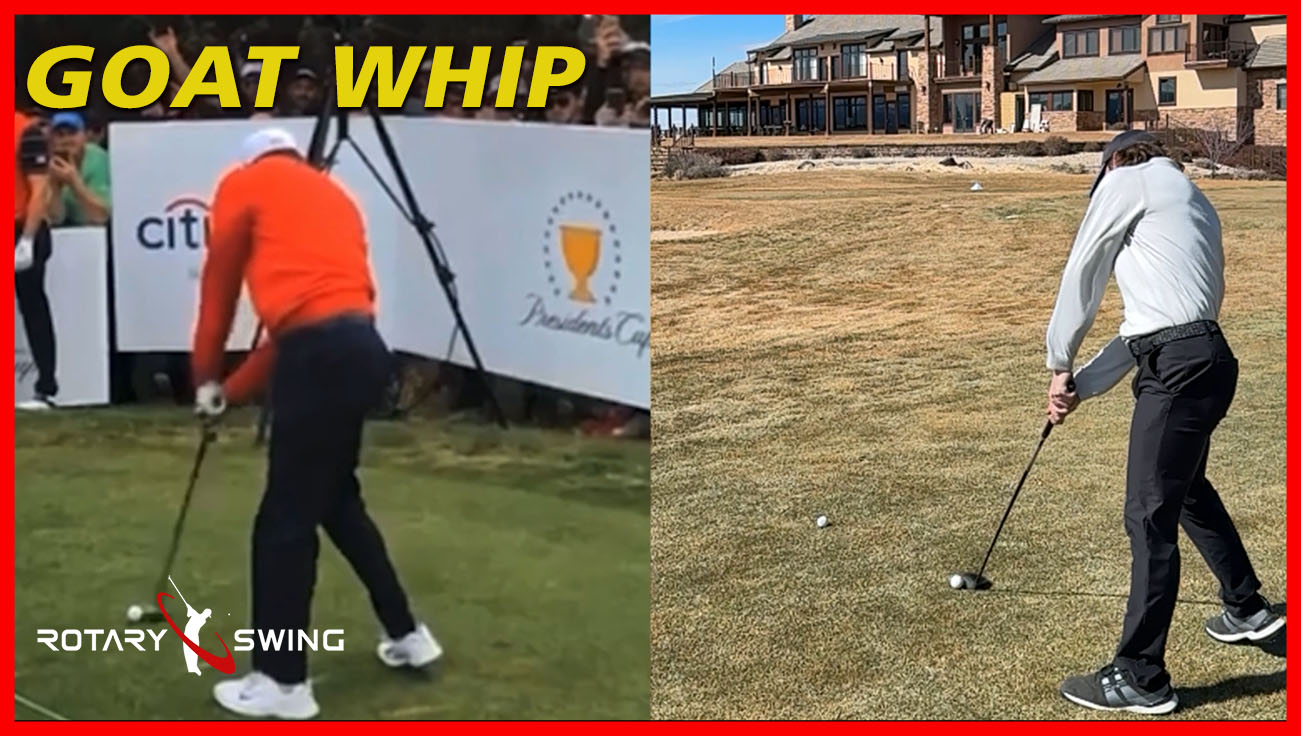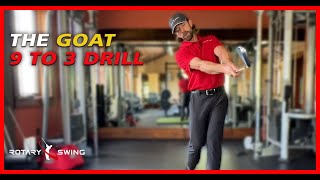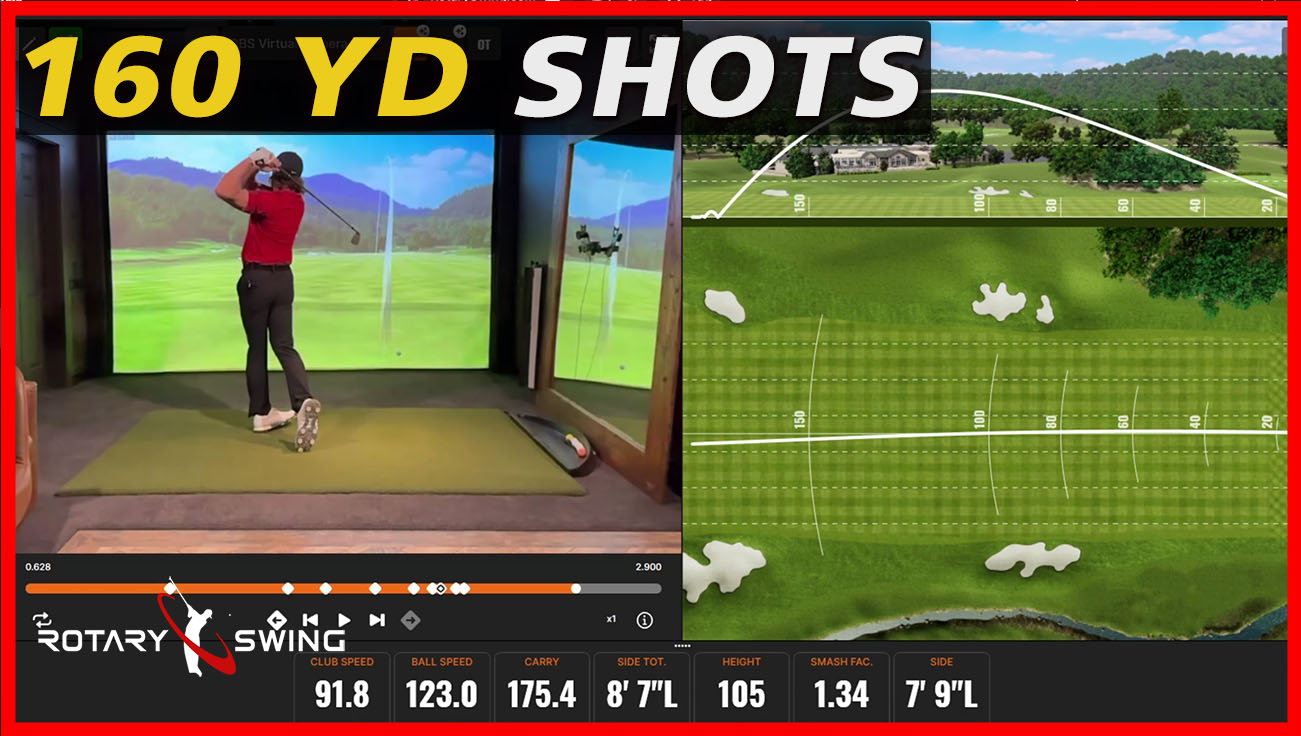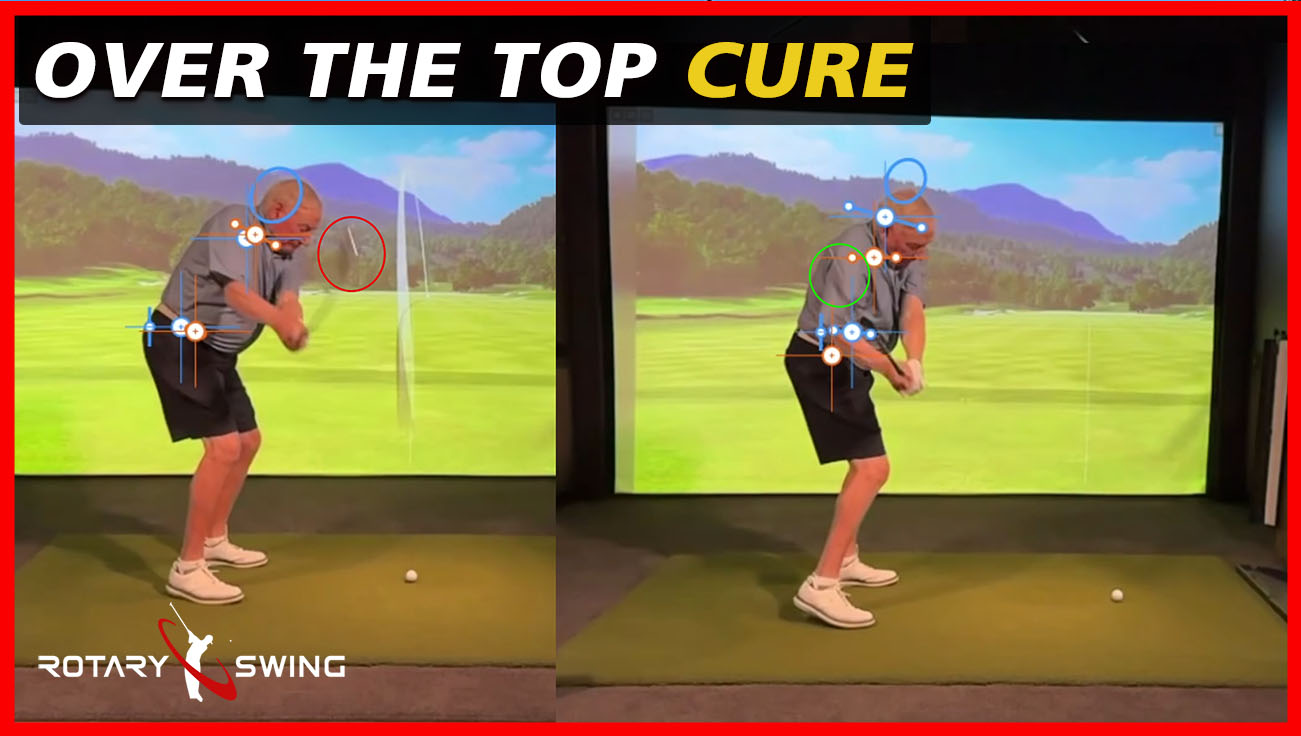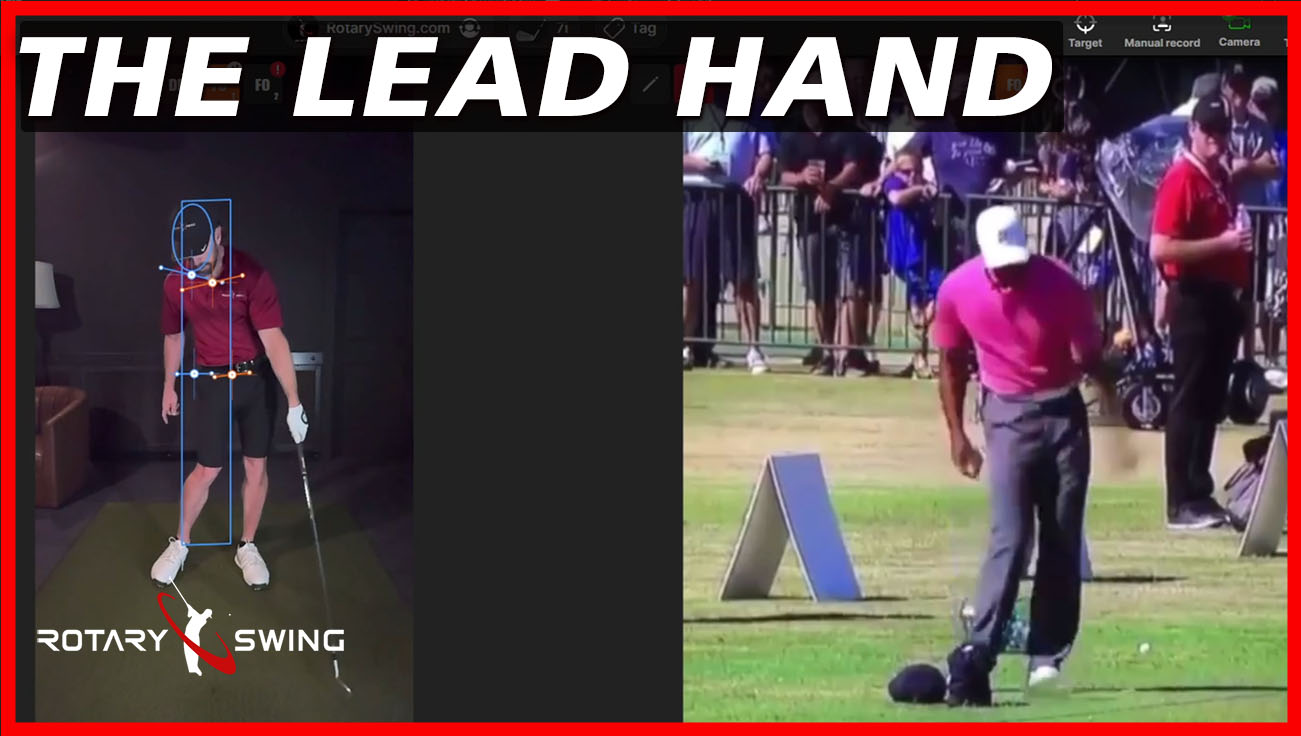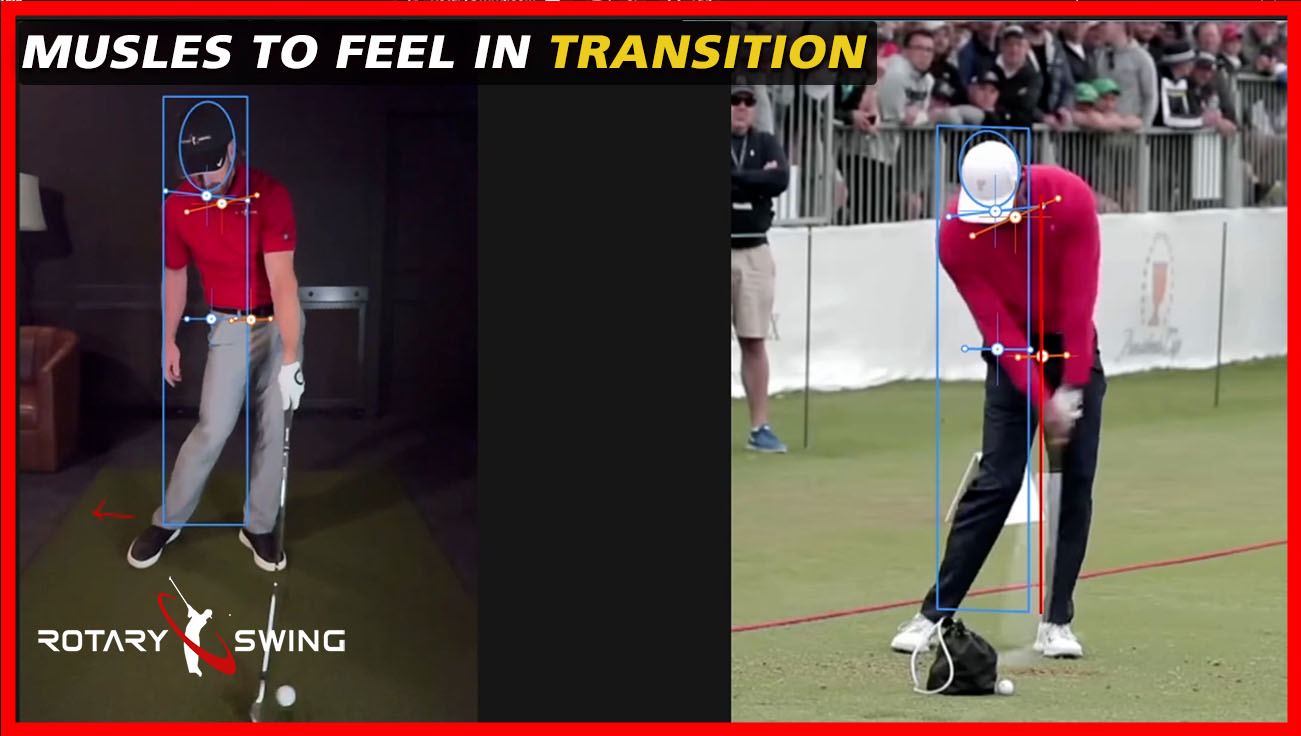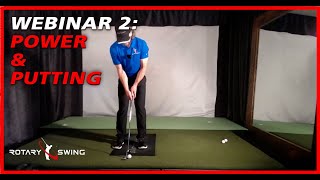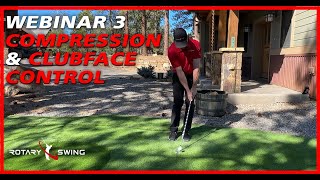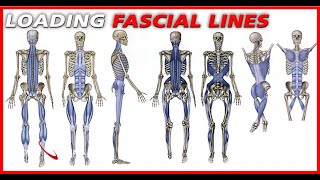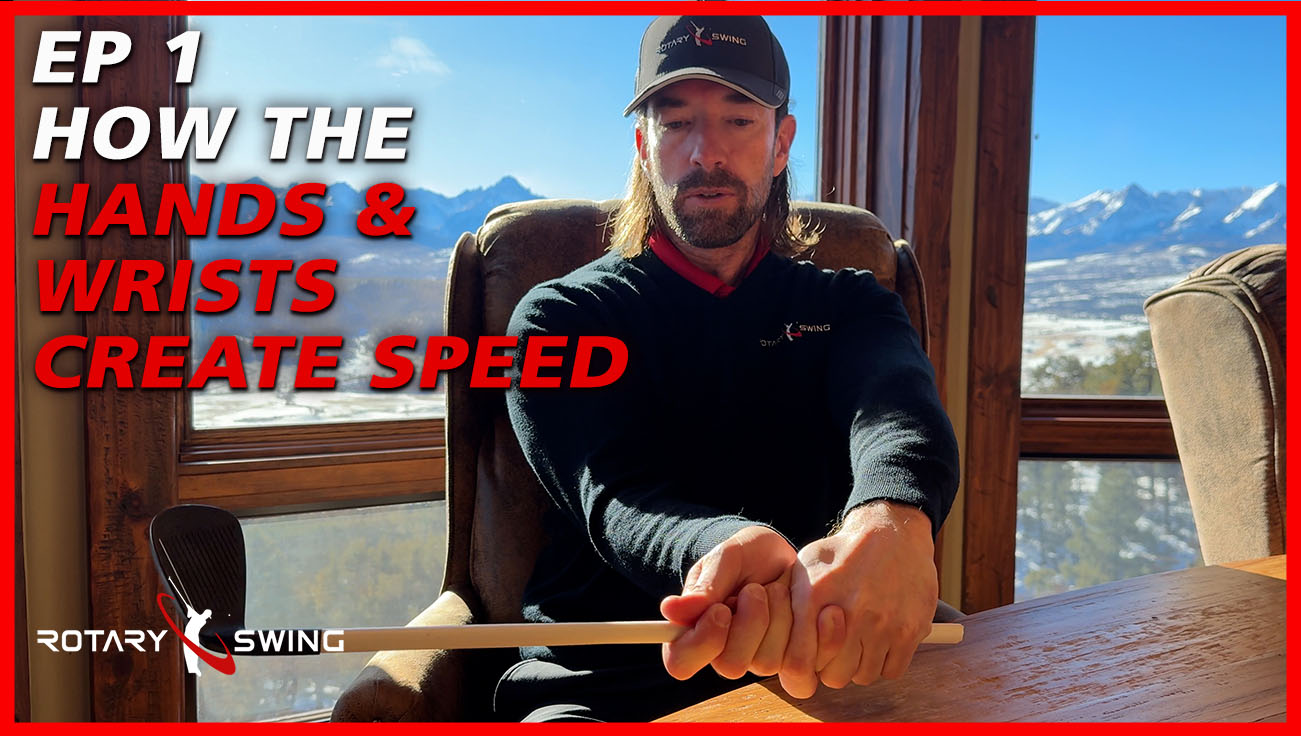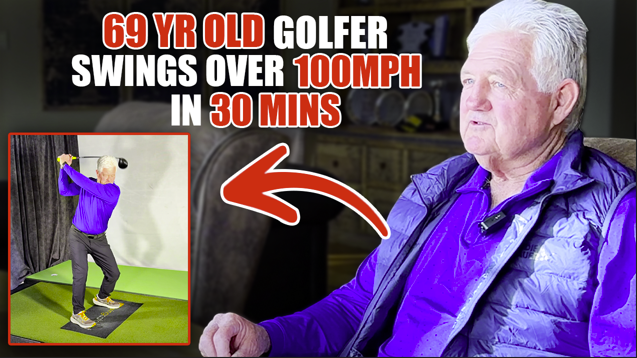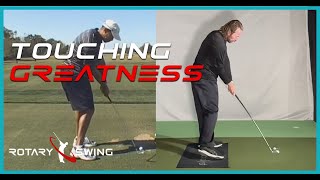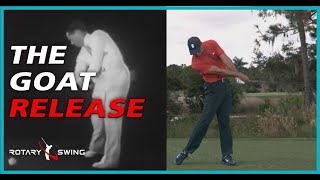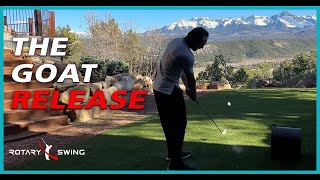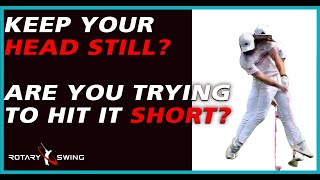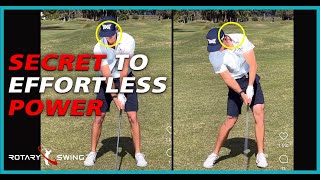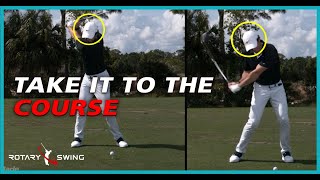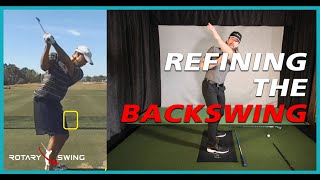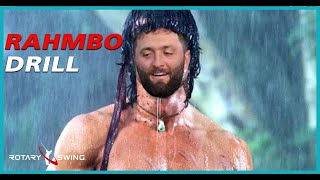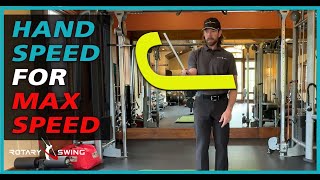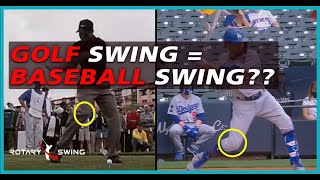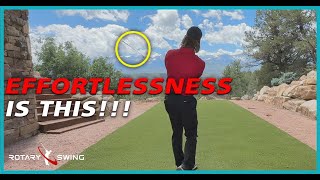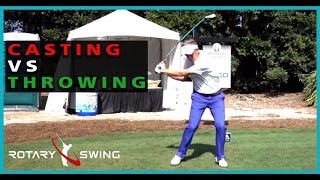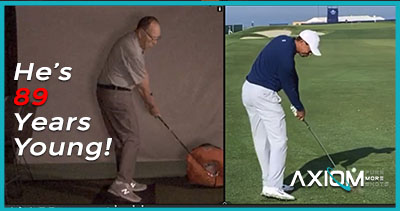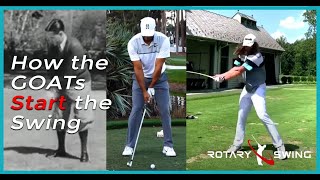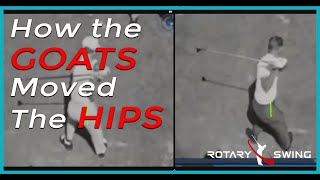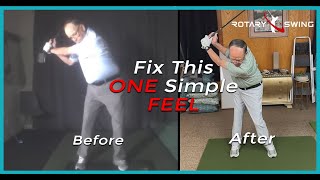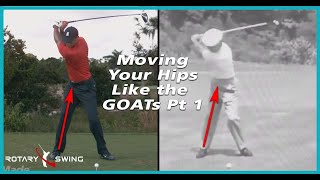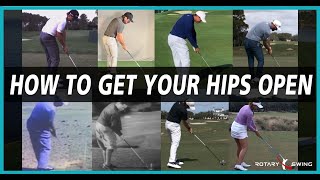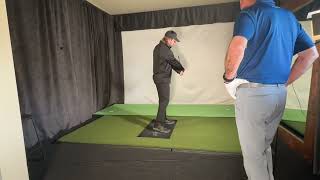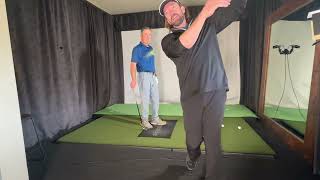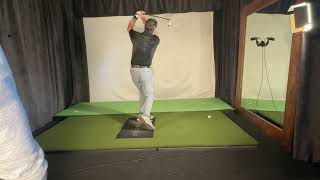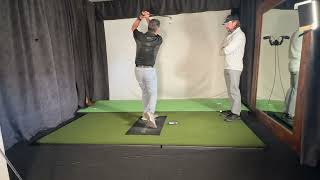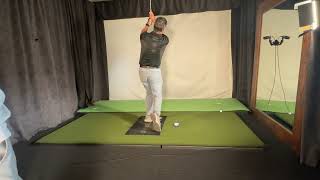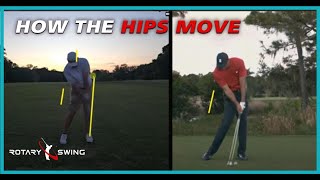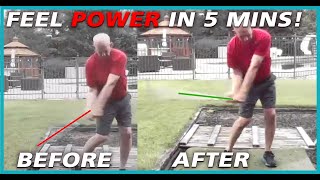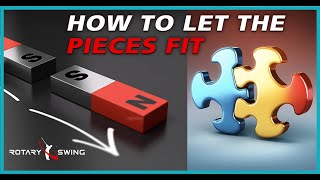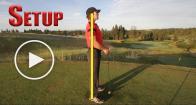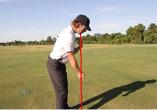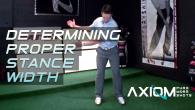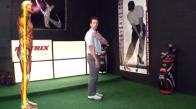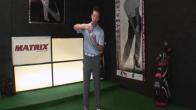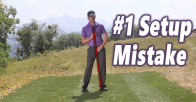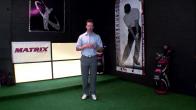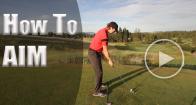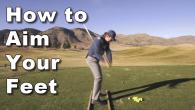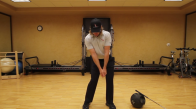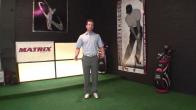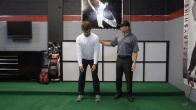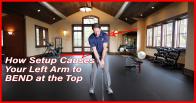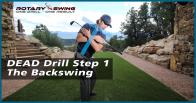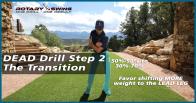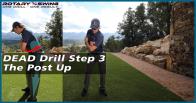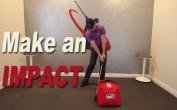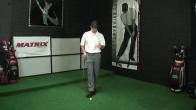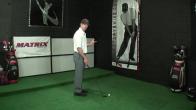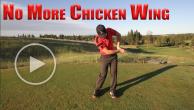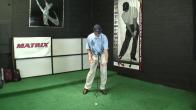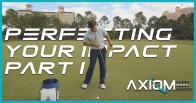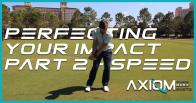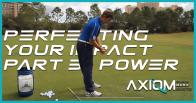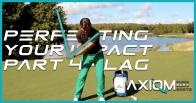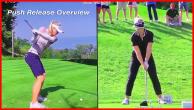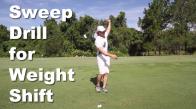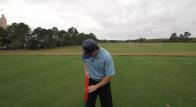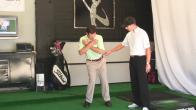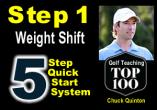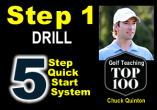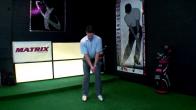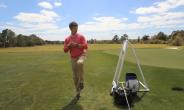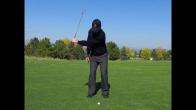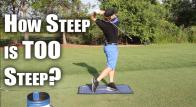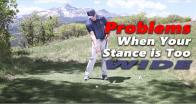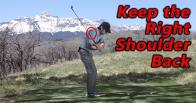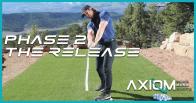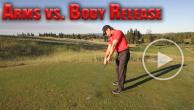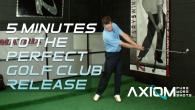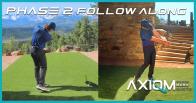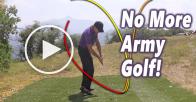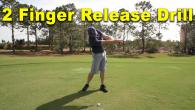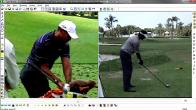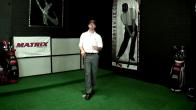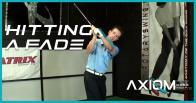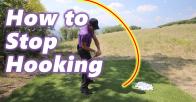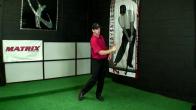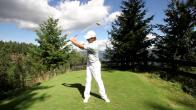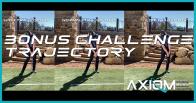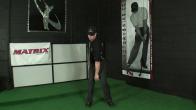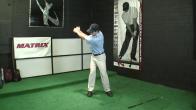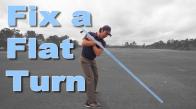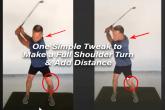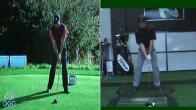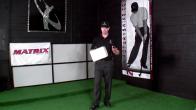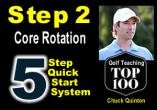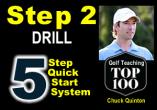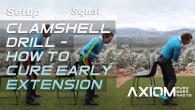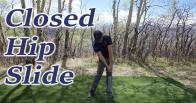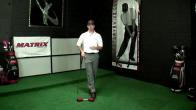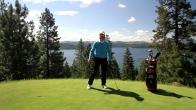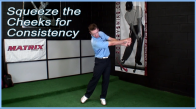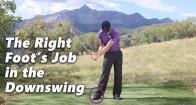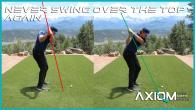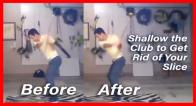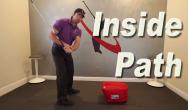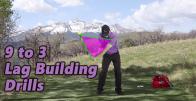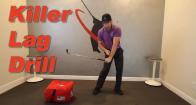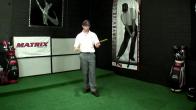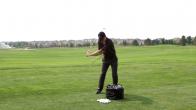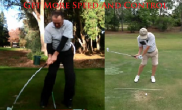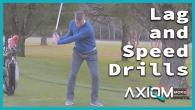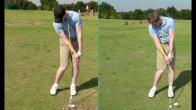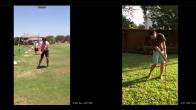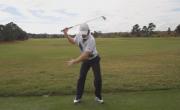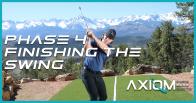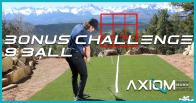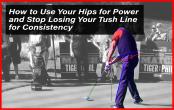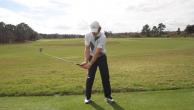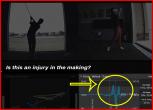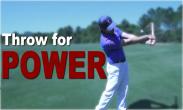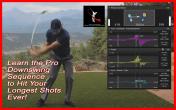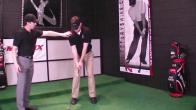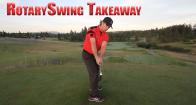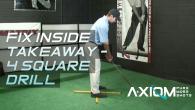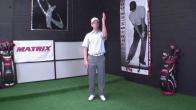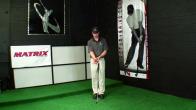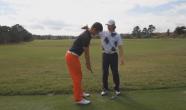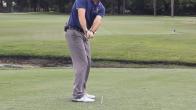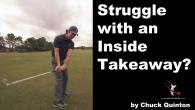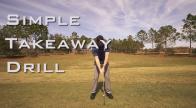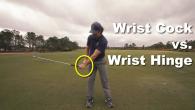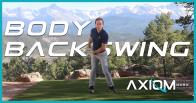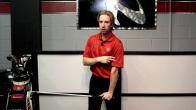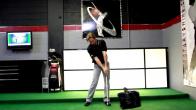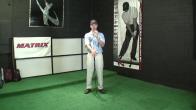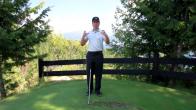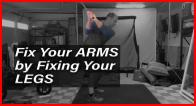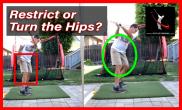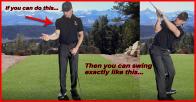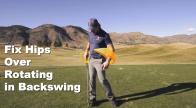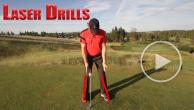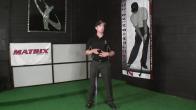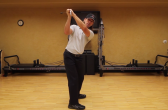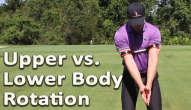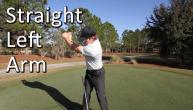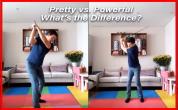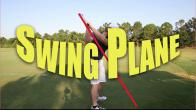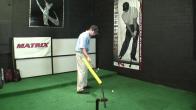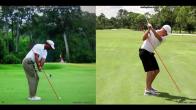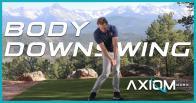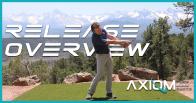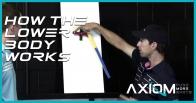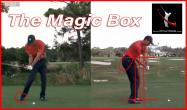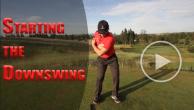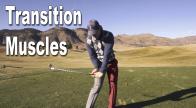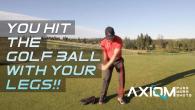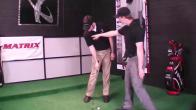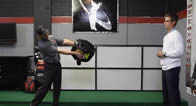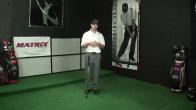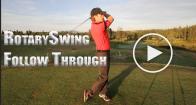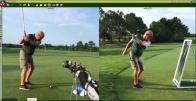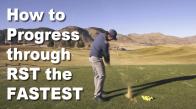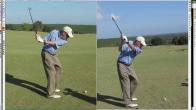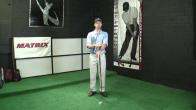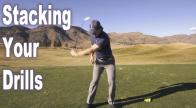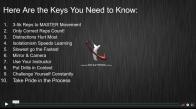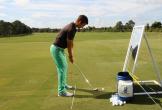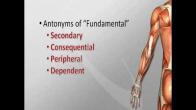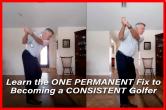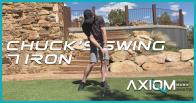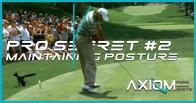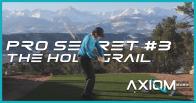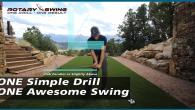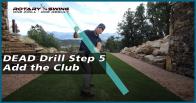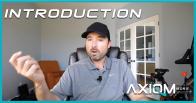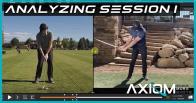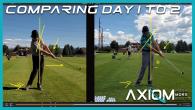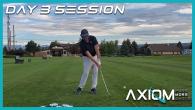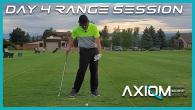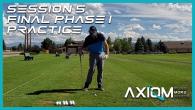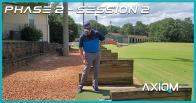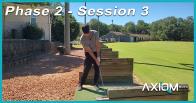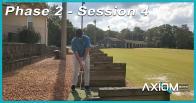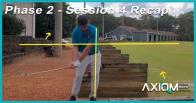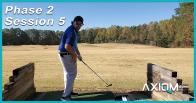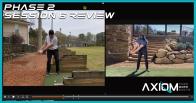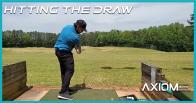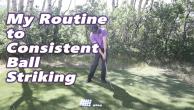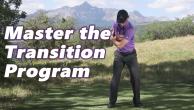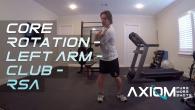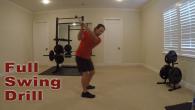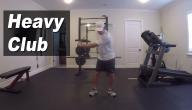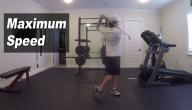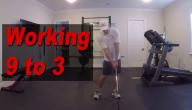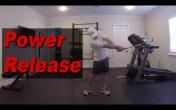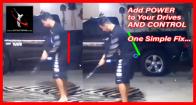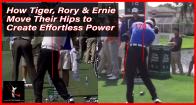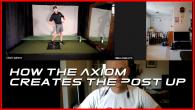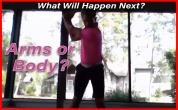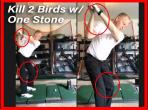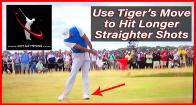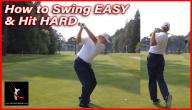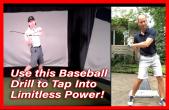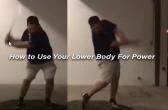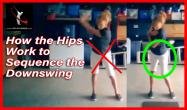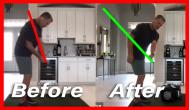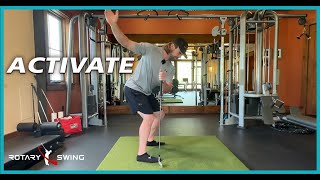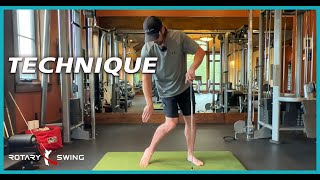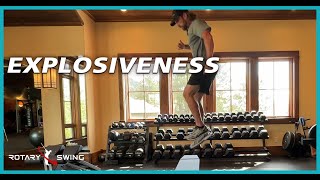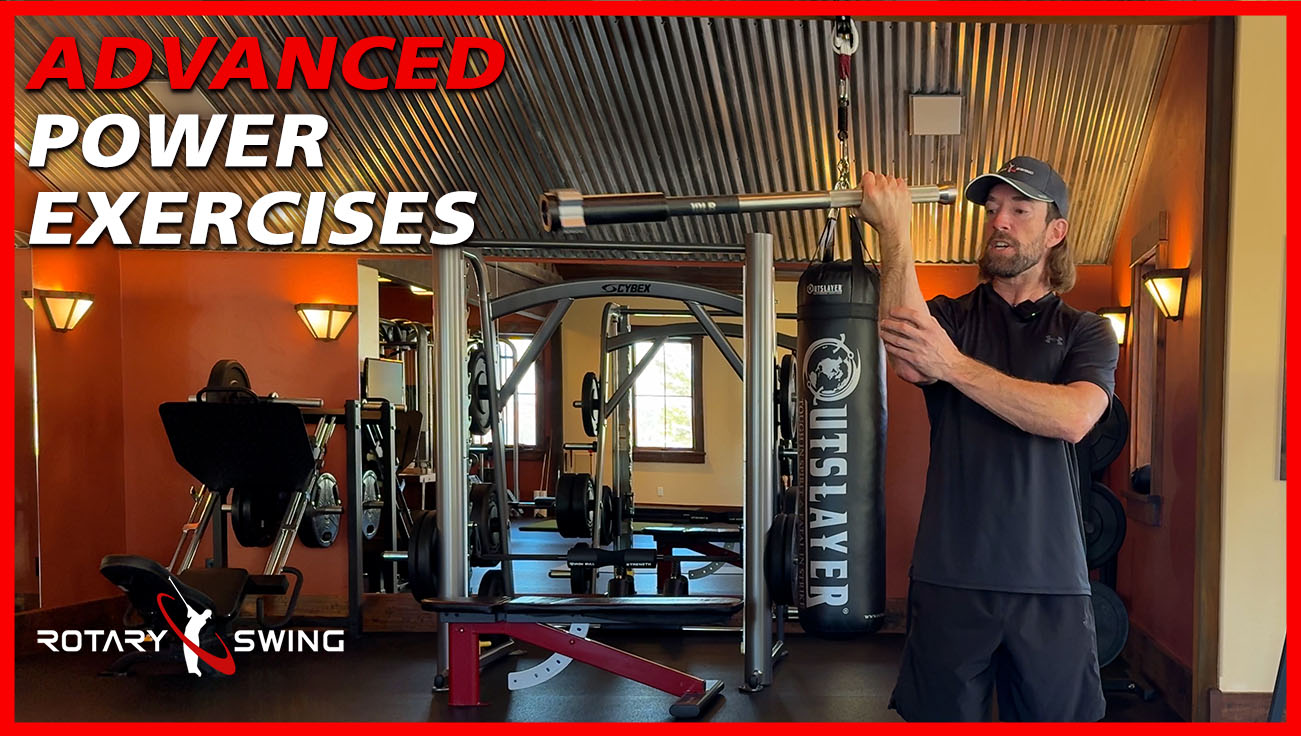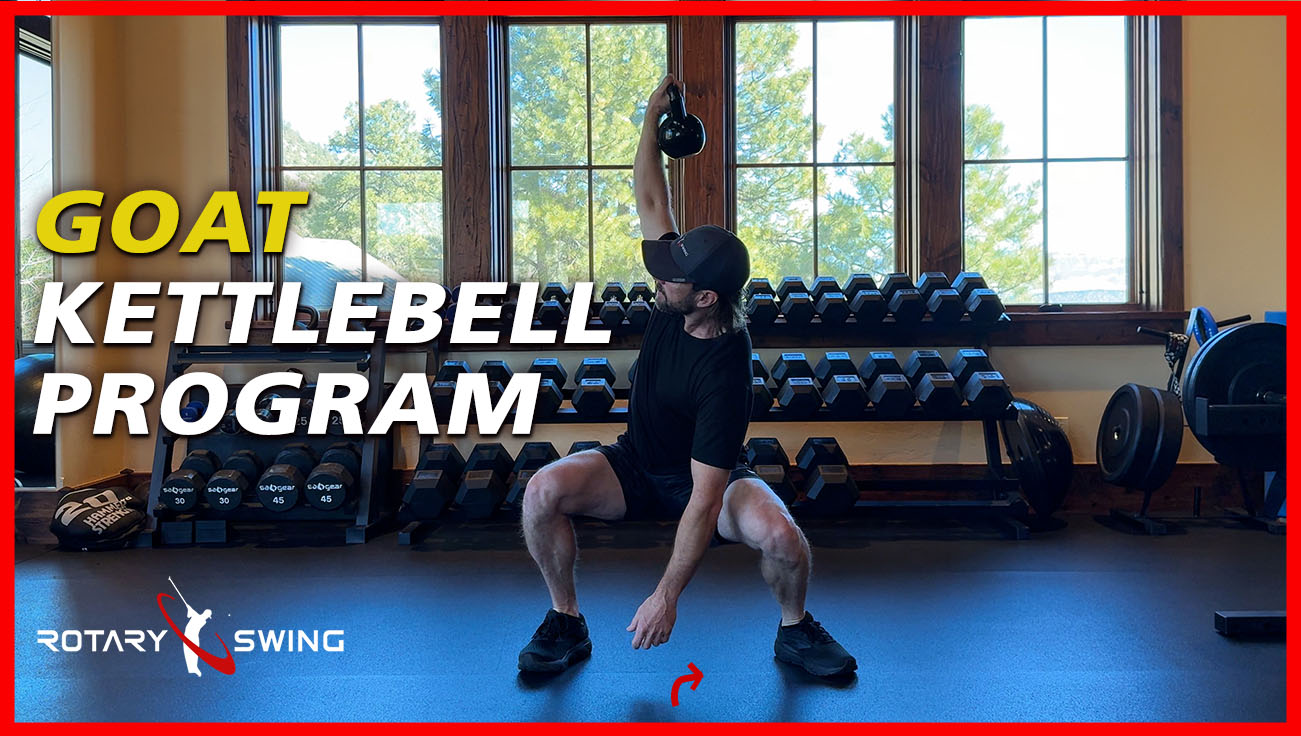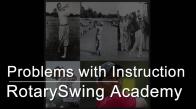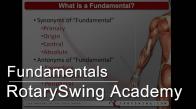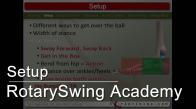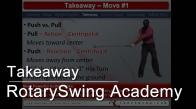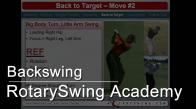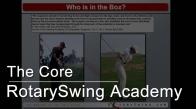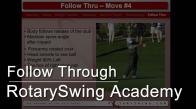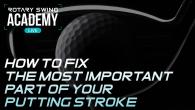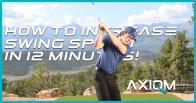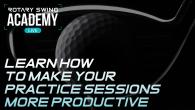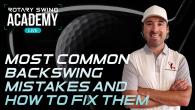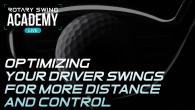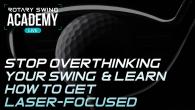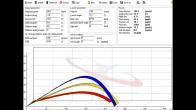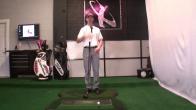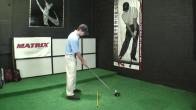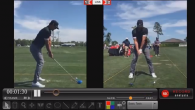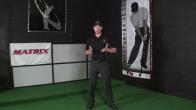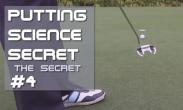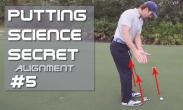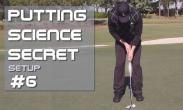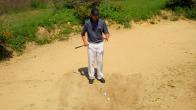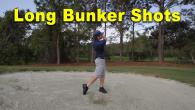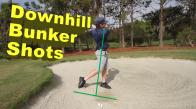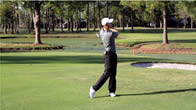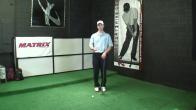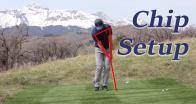Bootcamp 7, Sept 16 2020, Session 1
Session 1 of 6
It is number siete.
Siete.
Good evening, everyone.
Hopefully everybody is doing well.
Welcome to boot camp number seven.
Can you believe it?
Number seven.
Number seven.
That's crazy that we've done this many boot camps.
So welcome, welcome.
So those of you that are just joining us, you can go ahead and post up in the chat.
Let us know who's here and let us know where you're from.
We'd like to hear that.
So we're going to give everybody a few minutes here just to get settled into the room.
And then we will go through our introductions, and then we will get into the fun stuff tonight.
So we've got a big night for you.
Got a big night.
Big night.
Big night.
Kickoff.
So we've got Daniel checking in from Greenville.
Welcome, Daniel.
Thanks for joining us tonight.
We've got a lot of other people there.
Everybody's quiet.
So Kevin checking in from Detroit.
Comar.
Dr.
Comar checking in.
Welcome, sir.
Todd checking in from Arizona.
Brian checking in.
We've got Lee checking in.
So you're going to see us looking over in this direction.
This is where our monitor is.
You probably can see it out of the corner of your screen right now.
Bob checking in, Jim, Kevin, so for those of you that are not first-timers, welcome back.
For those of you that are first-timers, welcome to Boot Camp number seven.
We've got a very, very action-packed three weeks plan for you guys.
That's to say at least.
We've got a couple of changes, so you guys are going to see some different things this Boot Camp, which we're excited about.
How's everything going with you, Craig?
It's been going good, a little busy.
I mean, you know how life is right now with the strange climate that we're in.
Yeah, yeah.
COVID keeps us locked in the house.
I'll tell you what.
I mean, it's one of those things where I know COVID's hit people pretty hard, but for people that work on that, it really has made our job a lot more busy than I expected.
I can't tell you.
It's been crazy.
So golf is the one sport that really hasn't taken a vacation from anything.
And so good for you guys.
You guys get a chance to be able to work on your golf swings.
I have played the least amount of golf that I've ever played in my entire life.
I've played golf for 33 years.
which is difficult for me to admit at this point, but I've played golf for 33 years, and I have played golf twice in the last six months, which I'm sure is probably more than you because you've been in San Diego.
Yeah, I mean, if I get in two rounds a year, I've done well.
Yeah, so pretty crazy time.
So hopefully everybody's doing well.
Hopefully those of you that are on our West Coast are not having the struggle with a lot of fires there right now.
Hopefully.
Craig and I are planning to do a little rain dance tonight at the end of the end of the show to try to get some rain going.
So I've seen a lot of reviews lately from our West coasters and like, Look, don't mind, you know, it's just the smoke, nothing's going on.
And just even seeing it on a swing review really kind of brings home like, Wow, it's not good out there.
Yeah, yeah.
So those of you that are on the West Coast.
We're keeping our thoughts and our prayers as we move forward with absolutely everything that we're doing.
So hopefully everybody's doing well.
Welcome to boot camp number seven.
Um, we got a really, really fun night for you guys tonight, so that's going to be a high-paced night.
We're going to go through.
Some of the do's and don'ts of boot camp.
We're going to talk about some of the housekeeping items that you need to make sure that you have in place.
And then we're going to get right into Baxter stuff.
And we're going to make sure that you guys have a fair amount of information in your brain.
I shouldn't say fair.
I think that's a pretty understated word, right?
So we're going to have a large amount of information in your brain.
We're going to have a very detailed game plan for you guys over the next three to four days that you're going to be putting into place to get ready for Saturday, which Saturday is kick you in the butt day because we start working on transition.
So we've got a really, really fun night for you guys tonight.
We're going to get you guys ready for Saturday, when Craig and I usually talk for a good, extended period of time.
It's just like the first day of school.
You know, you get your syllabus.
This is what we're going to do.
This is what to expect.
You just do a little bit of work just to kind of get your feet wet.
And then by the time it comes Saturday, we're going to start really kicking you in the gear.
Yeah, yeah.
Everybody's a little nervous on their first day of school, and everybody's kind of kicking their tires around, seeing what's going on.
But we'll make sure that you guys are comfortable.
Typically, what we do at the end of boot camps is we will stick around for for several minutes.
Answering as many questions as you guys might have, so that you guys leave here with a very clear understanding as to what you're doing, why you're doing it, and how you're going to get it done.
That's extremely important to both Craig and I.
We've done six of these already, and we've been very successful with the students that we've graduated through the program.
It's been kind of fun to watch some of the people go through these big swing transformations.
And so we definitely have some fun stuff playing.
And you guys, bootcamp number seven, believe it or not, you guys are going to have a brand new Brand new stuff coming up here in boot camp number three.
Yeah, I think starting with number three.
It's kind of just more of an updated version.
As you know with rotary, we're always trying to advance, kind of stay ahead of the curve and everything.
So in this one, we're actually going to start to introduce some new materials.
That's going to be fun for all of us.
Yeah, absolutely.
So always fun to bring new stuff in.
And then on number six, we've got a wild one for you guys.
So number six, on session number six, we're going to be adding some new fancy little features into the release stuff, Which is where the rubber meets the road.
You guys all get excited, so just a couple things that Craig and I like to go through with you guys.
Before we get started, we realized that the internet is not necessarily a world of perfection.
And so a lot of times, you guys are going to see us a little bit on the grainy side, based off of internet connections that you might be seeing on your side.
I promise you that we have triple checked and quadruple checked our, uh, our connection on our side, uh, we are rocking and rolling.
So if you are seeing us a little bit on the grainy side, or you are maybe getting some spotting in and outs of us.
Then what you'll want to do is just make sure that you capture the replay.
So the replays are going to be available to you for quite some time after bootcamp.
We can't keep them available to you for a lifetime.
Because we did have some people that disobeyed some of the rules in a couple of the previous bootcamps, where they were starting to share some of the old stuff.
And so we have to keep them locked down.
So we'll make sure that you have an adequate amount of time.
So just remember that you're always going to have the replay available to you at the end of the session right away.
So, and then that, when that pops up, you'll be able to see exactly how we are broadcasting or the format of broadcasting.
And usually it's pretty, pretty awesome.
Yeah.
And it's definitely much better on the blue flood because everybody with bandwidth, it's going to cut in and out.
We'd actually know there's a storm coming in tonight.
So we might be.
We might have a little bit of an issue on our end, but just know when you get that replay, everything's going to be rock and roll.
Yeah, yeah.
So just a heads up, Craig, thank you very much for saying that.
Here in Florida, we get some odd weather patterns that move through here on a day -to-day basis in the summertime.
And looking out the window, we saw some pretty heavy-duty storms that were moving in our way.
So if all of a sudden we cut out, we will do everything in our manpower to be able to come back up.
We have experienced this in the past, I think on bootcamp number two or three.
It left Craig and I scrambling.
We lost power to the entire office, which was kind of funny, but we were able to restore it back.
So just be patient.
We'll come back on as soon as we can.
Again, this is all recorded.
So if we get to the end tonight, we spoke beyond the hour mark, And you guys need to leave because you have other obligations or you have other kind of things that are going on, then by all means, you can check out of here and just go back and watch the replay for the stuff that you might miss.
I'm excited about it.
I'm excited to be back because this is the longest break any time between boot games.
Yeah, we had a little bit of a layoff between there.
How many weeks was it?
Let's see.
Well, we haven't done one since June.
Really?
Yeah.
Wow.
All right.
Well, welcome back, my man.
It's good to see you.
It's been a while.
It's been a while.
So I still haven't had a haircut yet due to the current nature.
That's why, you know, my Kentucky waterfalls.
I'm getting a little big back here.
I'm like, I just had a haircut.
So I'm getting married in a couple months.
So she makes sure that I have a haircut on a monthly basis, just to get myself ready for December 5th.
It's maintenance.
You got to make sure it's continuing.
Yeah.
Okay.
So what we usually do at the start of our sessions, usually in the first five or 10 minutes, is we wait for everybody to get seated in the room because of the fact that.
Um, we know it's the world of the internet and some people have problems understanding where they're supposed to go.
And we don't want to have those people miss stuff that we're going to be talking about, especially early on.
And so now we're at the point where we're going to go ahead and start opening up and giving our intros.
And then we're going to start going through what our plan is for tonight.
So, first off, I'd like to introduce myself I'm Chris Tyler for those of you that haven't met me before.
I've been around the website for several years now, just about 10 years.
I've done a very, very large amount of interviews.
Master certified, just like Craig here.
And we've been able to work hand in hand during the boot camp processes or getting boot camp off the ground.
And we're really excited to be able to deliver the information.
I know that I've been teaching golf for many, many years, almost 18 years at this point.
And I haven't been able to see anything that passes the information along as good as this right now.
And I'm really standing firmly behind what we're going to be throwing over you guys for the next three weeks.
So I'm really excited to be able to see the transformation that you guys are able to.
Um, to be able to make.
And I'm really excited to be able to help you guys along the way.
And we have plenty of resources available to you guys during these, uh, during these next three weeks.
To make sure that you guys have all the information in your brain, make sure that you guys have all of the stuff that you need.
All the tools that you need in order to be able to get this stuff done.
Because at the end of the day, Craig and I don't want you guys to suck at this game.
We want you guys to play really good golf because I don't know why it is, but it makes me feel really good watching you guys hit the golf ball really well.
I mean, I was standing on the other side and I was, you know, inside the ropes playing golf at professional level for quite some time.
And I'll tell you right now, as much as I miss that side of it, There's nothing more gratifying than seeing somebody that you work with start to really enjoy the game a little bit more.
And I'll tell you this right now.
There's also the other end of the spectrum, where people get a little bit frustrated going through swing change.
I get it.
Swing change sucks because the fact that you know you have an old moving pattern that doesn't really die off, and taking the new moving pattern out to the golf course.
And trying to get those things to coexist well with one another is not necessarily an easy thing to do.
But we will definitely help you out as much as seemingly possible.
So again, my name is Chris Tyler.
I'm here to help you guys out as much as humanly possible.
I'd like to introduce Mr.
Craig Morrow here.
Craig, go ahead, and, uh, you're opening.
My name is Greg Moore and I'm sure you'll probably see me on the Facebook or the forum or the swinger or something.
I'm always bouncing around doing something on the side.
But, you know, as like with Chris, I've almost been here 10 years now.
And, uh, I was a student, or I was a playing professional under Chuck's tutelage for about four years before I came aboard the team.
And you know, one of the things that I really love about this whole process is it really gives you a very systematic approach to how to fix.
One thing that really frustrated me when I was playing for a living was.
I bounced around to all these so-called top 100s?
And nobody ever explained to me, Okay, this is what I want you to do.
Okay, well, tell me how to do it, and nobody ever told me, like, how to do it.
It's just this guy doesn't on television, so follow him and I.
I really love being a part of this family because I really like seeing as, like with Chris.
Players Start to enjoy the game more.
Because that's why I do this.
I really love to see people break 90 for the first time or break 80 for the first time.
And I haven't found any faster process than how we go through about this.
And, you know, I want you all to challenge us.
I want you all to ask us questions.
If there's anything back there, well, hey, I read in golf magazine that we should be doing this.
Ask us, is that something good or that's something bad?
But the good news is by the end of this boot camp, you all are going to kind of be your own doctors.
You're going to be able to answer the questions because you all are going to know this as well as we do.
Then, you know, I'm really excited to bring this uh information to you all because it's just been fantastic what we've been going through so far.
It's just going to continue to get better and better, right, exactly.
And so Craig and I are very much the same when it comes to golf instruction.
We like things very, very much black and white, we don't like gray area.
And unfortunately, golf is one of the only sports that you'll ever encompass that.
None of us agree on anything, right?
We all just cannot get along in this sport.
But That's why everything that you're going to learn over the next three weeks is very much facts-based information.
It's all backed by science.
It's all information that you can argue with all you want.
We'd love to have that open forum to where we can communicate back and forth.
Because it's really important to us that if you don't, intellectually buy into what we're trying to say to you, Then there's no way that you're going to be able to take this stuff to the novel person.
To be able to stick to it and see that it works.
You're going to see that it's a very important part to us that not only we give you that information as to why you're doing something, but to how you're going to be getting it done, and then also what this is going to lead to as you go further down the road.
Another big point that we try to make here is that we really want to make sure that we protect and preserve your body, which is A1 mission critical in this sport because so many people, and I think the fact that, I'm sure you've heard Chuck talk about it in some of the videos before, That 81% of these guys that play on the PGA Tour will sustain a golf-related injury that keeps them out of golf for eight weeks or more.
Think about that number.
So 81% of those guys.
Sustain a golf related injury that keeps them on a golf for eight weeks or more.
This is their livelihood.
We're not playing a contact sport, right?
We're hitting a little ball on the ground and it's static.
So why are we getting hurt?
Well, it's not their fault, really.
I mean, if you look at golf instruction and you look at the way instructors are trained.
They're really not trained to have anatomy and kinesiology under their belt.
And that's where we're different.
Because the fact that we understand anatomy and we understand kinesiology, we understand neuromuscular education.
And that's the stuff that we're going to pass along to you guys.
And so that's why it's exciting for us, because we take a lot of the guesswork out of it.
And so if you ever find yourself having questions, do not be afraid to ask questions at all.
Stick around at the end.
We want you to ask those questions.
We've had plenty of nights after seven boot camps where we've answered 35, 40 minutes worth of questions, which helps us get better with the way we deliver the information to you guys.
And so we'll be here to be able to answer that information for you guys.
But we do ask that when we are in the middle of our presentation, that we do keep our questions very minimal.
Because we were testing this in the beta format, or when we've gone through the first few group camps, the chat can be a little bit on the distracting side.
So somebody starts posting something that everybody starts watching that and starts taking away from what Craig and I are doing.
So we just ask that when we start really getting into the nuts and bolts tonight, that you guys just keep it down.
Yeah, just just relax until we kind of get through the message.
And one other thing that I also ask is when you do ask questions, Try to keep it on the subject at hand.
Because what we've had in a couple other boot camps, like tonight, We're going to be discussing that drill one and how we move to the backswing.
And then also we get a question on the formal Hey, I'm struggling with my lag and release, and we're gonna get to lag and release.
But try to keep it on the topic at hand, so we can really make sure that you're going through the process the way it's designed.
Yeah, absolutely.
Can't emphasize that enough.
So we're not talking about loud.
We're not talking about sequence.
We're not talking about any of that stuff tonight.
We've got to get this important stuff into your brain tonight.
That's going to set us up for a very, very hard session that we have coming up on Saturday.
On a scale from 1 to 10, 10 being hard, 1 being easy, the transition to 15.
There's 15 different ways that we can instruct it.
What Craig and I have done is we've taken a lot of the information that you guys have had into your brain, just like we're going to be talking about tonight, and we're going to figure out a way to simplify this stuff so that you guys have a very, very.
Select word of what we call keywords.
Okay, keywords are just ways that Craig and I communicate with your brain.
All right, keywords are going to be those things that you're going to hear us over and over again.
So when you guys go to bed tonight, you're going to hear Craig or I in your brain saying, you know, low to the right side.
But you're going to be like, Yeah, I hate those guys.
But that's exactly the way that we're going to be going through this process.
And you're going to notice, as we get through it, that your keywords are going to start getting, there's going to be a list of them, They're going to start getting faster.
They're going to get tighter.
And that's how you're going to be moving your body along with us.
And we're excited to be able to do that with you guys.
So we're going to be doing an interactive session tonight where we actually have you guys stand up out of your chairs, have you guys go through the processes with us.
And then we're going to lay out a rep plan for you.
And once we get that rep plan in place, then you guys are on your own for the next three days, next four days, really.
Three days.
That wasn't my promise, but more than that.
We're going to get you guys on your own to start working through things, And then we're going to also give you guys the ability to be able to have contact with us during the processes, Which is really key, because if you have questions or you don't know if you're doing something correct, or you want us to have our eyes on it, we're definitely going to make ourselves available.
All right, so let's go ahead and get into what you see up here on the screen tonight.
So a lot of you probably cannot see what's up on the screen tonight.
We get that.
This is actually the PDF that you guys were emailed.
If you do not have access to the PDF, then I'm going to go ahead and put it in the chat right now.
And if you don't get it still at that point, then we want you to email customer support.
Okay, so there it is.
So there's your PDF.
Okay, so you can follow along with us.
There's going to be a lot of great information in here.
There's also going to be pictures that you guys can follow along with.
Now, All of this information that you're going to see in the PDF is going to be expounded on by Craig and I.
So we're going to give you the ability to be able to take notes in this process, which is extremely important, which is number five on here.
Okay, we're going to talk about what your rules of engagement are, so your rules of engagement and number one, and the most important part of this whole process is that.
Any time that you're going to be practicing or working on your golf swing, you must be using a mirror or a camera at any time.
You are working on the stuff now, why is that right?
Oh, because feel is not real.
And that's going to be the only way you're going to actually know if you're making.
The change is if you see yourself doing it.
Because you might go and put out 100 reps.
Like, Oh, I got everything done.
Then you pull out your camera and look at it, like, wait a minute.
That kind of looks exactly what I've always done in my golf swing.
Because you can't trust your feel right now, And I don't trust your feel right now.
You need to see yourself going through the motions.
And, you know, I can give you an example of just today.
I did a live lesson at four o'clock with a lady, very nice lady, that was struggling with moving her head too much.
And so using the camera that we're on using our feet, I said, use that fixed point in space right behind you and watch yourself.
And it was the first time.
I don't know the first 15 minutes that the head didn't move and I was like, See, it's because you watch yourself and you're able to focus on it.
You need that feedback, if you do not have feedback, how do you know if you're doing it right?
Exactly?
So, it is absolutely a one important that you use a mirror or you use a camera during these processes.
In order to make sure or be able to back check positions, because we're going to give you very, very specific checkpoints.
In fact, I'm going to have Craig doing a lot of the demo work.
Where I'm going to be kind of barking out of the same keywords that I'm going to be barking at you guys at home.
And you're going to see these exact checkpoints along with the pictures to be able to back you up along the way.
So that's rules of engagement number one, number two.
If, for any reason, you are unsure if you're doing the movements correctly, submit your swim for review immediately so you don't waste time at all.
So the good news is is that Craig and I over the last 10 years have done bulk of this interviews on this website, right?
I think I've done like upwards of 50, 55, 000 interviews.
And Craig has done a very, very large amount as well.
And so we this is what we do on a day-to-day basis.
So when we're not teaching boot camp with you, we're sitting behind a computer and we are barking information at you and we're drawing on the screen.
And so if you are uncertain if you're doing something correct, or if you just want us to take a look at it, then send it in for swing or send it in for review.
Now, for those of you that are boot campers, we do give you the luxury of being able to request Craig or I.
Okay, that's perfectly fine.
So if you want to say, Hey, I'm a current boot camper and request Craig or request myself, you can do that.
We have no problem helping you out.
We also want you to know that you have a couple other options and by no means this is a sales pitch.
All right, we have both of us on unlimited swing review groups.
So if you want constant interaction with us, you want to be able to work on things day to day, even beyond boot camp.
Then we've opened up spots in the group, that's a really, really good tool for you guys to be able to access.
You would just go to the Swing Review portion of the website and then go ahead and click on where it says Unlimited Swing Reviews.
And then you can see on the page you know how to join our groups?
There's plenty of spots.
If you find that one of our group sells out, just let us know, we'll go ahead and get a spot available for you guys.
Because we find that it's really important for you boot campers.
Specifically, to make sure that you're getting these, uh, reviews done on a quick basis.
So that when you work on things on Wednesday, Thursday and Friday, that you're not working on things incorrectly.
And so Craig and I are not necessarily perfect, and we're not robots.
We're going to return things back already in five or ten minutes, so give us, you know, 24, 36 hours, we're generally getting those things back right.
And it's of the utmost importance because there's so many ways to get a hold of us to get your questions answered from the Swing reviews, or from the forum, or from the Facebook pages.
We don't want you to go away doing something that you're unsure of, like, we really want you to be committed to the process.
And even if it's the simplest question, Hey Craig, you know, should my shoe be tied as I'm doing this drill?
There is no dumb question now, it might be a little bit, but there is no dumb question.
We want you to ask, we want you to be dead certain of what you're trying to accomplish so that you can get this down exactly.
So, a couple of the resources that you guys have available to you during the processes, um, you obviously have access to our forums.
Now, a lot of people ask, what are the forms?
So, if you go to the website and you click on Any video, all right underneath the video.
There is a list of questions and answers.
That have been, you know, accumulated over the last 10, 12 years or so.
You can go ahead and post your question there.
What happens is all the instructors are notified.
And we can see that question posted.
And then we can typically jump on there and help you answer your questions pretty quickly.
You also have access to the live lessons, Which I've been a big hit lately since.
We introduced that since COVID came through and we had to offer some live sessions because people were getting scared.
To jump on a plane and travel to Orlando to do some private instruction with us.
So you have access to the swing reviews, you've got access to the live sessions, you've got access to the forums, You also have access to the Facebook group, where you spend a lot of time on there, answering a lot of questions.
So we want to make sure that you don't feel like you're alone in any part of this process, which is really important to both Greg and I.
We will make sure that everything that you need during the next three weeks of your life is answered in your brain.
So that you work on the things that are going to help you get this stuff once and for all, because we want you guys to succeed, right?
We don't want you guys to go ahead and take up fishing because fishing sucks.
I mean, I like fishing a little bit as a kid.
I don't like to bait the hook and pull the fish off there, but I think you guys get it.
So really important that you understand that there is all these avenues.
So when we sign off tonight, that don't feel like, oh my gosh, I'm on my own for the next few minutes.
Okay, we're going to help you.
Okay, so we're here for you.
All right, next one.
So, ask questions during live training so we can answer them in real time to clarify anything you don't fully understand.
So again, if you have something pressing during a session that pops up, don't be afraid to ask it.
Okay, we'll see it pop up over on the screen over here.
That's why you'll see us look over here to our left-hand side.
But again, if you have questions that you know that can wait till the end, then wait because we don't want it to become distracting.
But if you have something that comes up that's specific to what Craig and I might have talked about, Everybody knows I talk 3,000 miles an hour.
If you didn't understand something I'm saying, then you can ask me to repeat it or you can just say, hey, what the heck did he just say?
Then I'll have Craig step in because he speaks much slower and more rhetorical than I did.
Number four, in order to get the faster results, you must do the drills on the days that we're not participating together.
We are going to give you a checklist of things that you're going to be doing on the days that we're not together, and you can go ahead and document your reps.
It is absolutely important that you do these reps and you do them in a way that you're doing them as close to perfect as you possibly can.
If you're just going to go out there and you're going to try to rip out 100 reps and you're not sure.
If you're doing them right, then your brain's not getting fed the proper information that it needs to.
And Craig and I, I'll speak for me specifically, but you can jump in here too.
I really geek out on neuromuscular reeducation, okay, understanding how the brain learns is fascinating to me.
It always has been fascinating.
I was epileptic as a kid until I was 12 years old.
And I wanted to understand why, what was going on with my brain at that point.
And so, you know, Understanding how this brain, or your brain, processes information, and how you can change it and restructure it so that you do different things, is a really, really neat thing.
And you're going to hear both of us talk about the importance of repetitions and what we're doing when we're getting these repetitions.
And what our brain is going through.
As far as the cycle is concerned, in order to be able to make it a movement pattern.
So those are things that you're going to hear throughout the process.
Always make sure that you're going and doing the repetitions, because repetitions are how we get this stuff done.
Okay, if you just go home and you already listen to the video over and over three times, then you go watch Chuck's most recent video with a live session.
That doesn't, that doesn't do any good.
You got to stand up and you got to do the work right, right.
And one of, you know, Chris's vet fees, and I know it's one of my pet peeves.
Is Rep stringing?
The last thing we want you to do is we're going to throw up some numbers, we're going to say, get this accomplished.
Sorry, do 100 reps now getting up here and going like this, that's not getting your reps in, that's not.
It's not a race to get the number, it's the goal that we hit the number, but we hit the number correctly.
We want you to take your time and go through it.
Nobody learns at 100 miles an hour, exactly.
And so when we give you 30 seconds of video footage to send us, That doesn't mean we want you to do 60 swings in those 30 seconds, and you'd be surprised.
We have a file of those people that like to send in reviews where they're getting as many swings as they can.
When you do that sort of thing, what you're doing is you're setting yourself up for a big disaster.
You're setting yourself up to get a slap on the hand from one of us.
Because what we're going to do as instructors is we're going to go in there and try to find variability.
If we find variability in those 30 or 35 reps that you just sent in, guess what?
You're going to have to start the process all over again, and that sucks.
Craig will tell you, and I'll tell you this, that the people that go to the slowest are the ones that will get to the end the fastest.
And I know that we probably have some people in the room tonight that have played golf at a very high level.
I mean, we've had some playing professionals joining us in some of the boot camps.
We've had some plus ones and plus twos.
And so those, you're not any different than any person out there, right?
You've still got to go through the processes and be able to rewire your brain just like somebody.
That's a 25 maybe cap.
That's what it takes.
You've got to take your time.
You've just got to go through the processes the correct way.
If you don't and you start trying to speed right through it, then your brain's never going to absorb the information.
When you go into REM sleep at night, it has no problem discarding that information and kicking it out the door.
Next piece, number five, take notes.
We talked about that before we started getting into this long list of rules of engagement.
Make sure you take notes.
We actually give you space on each one of the slides to be able to write some things down.
If you print out the PDF, You can go ahead and take notes on there, so you have some understanding as to what we're talking about during certain parts.
Number six, track reps.
Anytime you get out there and you start practicing, you want to track your reps.
Typically speaking, a good solid practice session is going to be in the ballpark between 100 to 300 reps.
You want to be able to get 100 to 300 repetitions.
I know that can sound like a daunting number, but that's exactly how your brain learns this stuff.
Anything less than that, really, at night when you go into REM sleep, your brain goes in and kicks it out the door.
It needs to be fed correctly, so you want to be between that 100 and 300 rep mark, and you're going to see that each one of the nights we ask that you at least get 100 reps in.
Now, you can spread those out throughout the day.
Just make sure that you're getting these reps done.
We prefer that you do them in one full cycle, but we don't necessarily want you to make it a workout program where you're.
I had a guy in a garage in Georgia that sent in, and he was drenched from head and toe.
He gave me so many reps here.
I was like, you can take some breaks here.
You don't need to put yourself in the ringer to where you're like, you've got an O2 tank out there.
You can take your time.
You can do things in sets.
What if you were at the gym?
Very important part.
Just with attracting the reps, the thing is it just keeps you accountable.
One of the things that drives me nuts is when somebody's like, oh, well, I did all that.
That didn't work.
It's like, all right, well.
Did you do the reps?
Did you use a camera?
Did you get some feedback?
It's like, well, yeah, I did 100 reps and I'm like, all right, well, you know Show me what you did and they're like, oh, yeah, well, I just sat here and I did this.
I'm like, nothing about that is correct.
But when you, when you really track and you, it's like diet and exercise, all right, I'm gonna check off.
I had my four cups of water, I had this, I had that.
When you track your reps, You just make yourself more accountable to getting the job done.
Right.
And so one point that I'm going to make before we get started in with your vaccine tonight is that.
If you're trying to take the stuff that we're learning over the next three weeks, and you're trying to implement it to the drive range or to the golf course, Then you must put yourself in a situation where you actually feel like you have the golf club in your hands, or you will not succeed.
Your brain needs to be fed exactly the way that you're going to be doing things on the drive range.
So I can't tell you how many times we'll look at people's setup.
and they send in reviews where they're standing up vertically like this and they're doing reps.
I'm like, well, would you stand like that when you have the golf over your hands?
No.
Okay, so you need to make sure that you go through the process.
It's extremely important that you put all of these little nuances that we put in place tonight, and you have a very, Very detailed list of checkpoints that you're going to be going through in order to be able to get this stuff done.
So I think that's it.
I don't want to keep beating people up, right?
It depends.
It depends, because in one session, we had, I think it was the session number three or four, but we had to beat them up a little bit.
They weren't following protocol.
So this is your warning, so to speak.
We're giving you all this information out.
If you don't follow it, then we're going to beat you up.
Right, right.
So again, for those of you that want to be able to get to the end results, just take your time, go through the reps, make sure that you ask questions.
Take and use the slides that we're giving you here as a way to be able to back check and reference what you're talking about.
Now.
You're going to hear things over the next three weeks.
That might be a little bit different from some of the videos that you might have encompassed in the past.
So some of our lifers that have been around for 10, 12 years, 13 14 years.
You're going to hear us pass along information differently now.
Why is that?
Well, because everybody in this golfing world processes information differently.
And so if I or if I teach, way shift a certain way, and Craig teaches way shift a certain way.
It doesn't mean that we're trying to step out of the binds of what we teach here at Rotorson.
We're just trying to give you guys different ways to be able to look at it so that you guys all get to the end result the same way.
And so you're going to hear some different things and I know that, um, that usually spurs on a lot of questions at the end, but that's the fun part.
So, uh, we can definitely answer that, and I know that we're going to get the one question tonight.
At the end, I know you guys are probably all loading it up.
What do we do when we try to play?
What?
How's it going to work if I try to play or practice during these changes?
So you guys, you You can go ahead and load that question up.
We'll answer that one at the end.
I've got Thursday night men's league.
What am I supposed to do?
Yeah.
Okay.
So here's our goal and our game plan.
So tonight we're going to rip through setup and we're going to rip through back swing.
And we're going to go ahead and talk about some of the key points.
We're going to get you guys up out of your chair.
We're going to do a good portion of reps both face on and down the line with you guys.
And then we are going to kick you guys out the door.
We're going to do some questions before we do so.
But we do like to spend a fair amount of time going through all of the rules of engagement first.
And then we'd like to go through this stuff fairly quickly with you guys because a lot of you are pretty well-versed on our setup stuff.
And we're not going to talk about every little nut and bolt to the setup position.
We're going to talk about the key points that Craig and I are going to be looking for as we go through the process of this stuff.
So without further ado, the checkpoints for setup tonight, we're going to be talking about stance width.
Stance width, two inches outside of neutral joint alignment.
Okay, let's not overthink this.
Okay, what neutral joint alignment is, If you were to take all the skin and fat off of Craig and you were just standing here like a big bag of bones, If he was just standing here in his skeleton, if he's standing in neutral joint alignment, what you're going to notice is that the center of his ankle, the center of his knee, and the center of his hip socket are all right in the line.
That's how you're going to determine neutral joint alignment.
You can use an alignment stick or you can use a golf club.
The best way to determine where the center of your hip socket is, just so you know this, is if you find that pointy pelvic bone on the front of your body, Right around two-figure widths inside of that is, generally speaking, where the center of your hip socket is going to be.
So you can find that, and then you can put your center of your ankle joints right underneath that.
That's how you're going to know when you're in your joint line.
Now, you're going to be two inches outside of that on each side.
Now, how do you determine two inches?
It's just a little small step out.
Just a little small step out.
Don't overthink this.
Again, the last thing in the world we want you to do is start dancing around with stance mirror.
Everything that we do and everything we talk about tonight is going to be requirements based.
People ask the question, what does that mean?
Well, let's talk about the requirements of stance growth.
What are we actually trying to do with our stance in the golf swing?
Well, the first thing that we're trying to do is maintain stability.
We want to be able to be as stable to the ground as we possibly can.
Now, if I told Craig, get really stable, I'm going to come knock you over, what is he going to do?
Well, he's going to get really wide and he's going to get really low.
Okay, so when he gets really wide and really low, now what's the problem with this?
Well, let's think about the other requirement to stance with.
What are we trying to do in the golf swing?
That's extremely important that a lot of you don't forget about?
Well, let's shift our weight, right?
Now, Craig can clearly shift his weight from one side to the other, but now look at his head.
See how his head's moving all over the place?
Okay, that's the reason why we don't want to set up too wide.
If he sets up too narrow, when we start swinging this tool around our body, it effectively becomes pretty heavy.
A driver, if you're swinging at 100 miles an hour, becomes almost 100 pounds.
Think about that.
That's pretty freaking heavy.
A lot of you can't even lift 100 pounds, right?
That's a pretty heavy amount of weight.
And so stance width being too narrow is not going to allow you to maintain stability.
So that's why we say two inches outside of neutral joint alignment is perfectly fine.
We have noticed, for those of you at home that carry Sharpies in your golf bag, okay, Sharpie, the cap of a Sharpie is actually two inches wide.
So if you want to get really precise, a lot of people take an alignment stick out and they'll mark it.
You can use those sharpie caps, those are right around two inches, okay, so get stance width two inches outside of neutral.
Next thing we want to make sure that we have axis tilt.
Let me be very clear, I'm going to step up close to the camera.
Axis tilt is important.
Okay, you've heard us talk about it for years upon years upon years.
Do not overcook axis tilt.
okay, axis tilt.
Yes, a lot of you are already going to have it pre -embedded in your golf.
So, clearly or not?
If you set up with your feet, your hips and your shoulders all in a line, because your right hand or your trail hand, I should say, is going to be lower in the golf club, you're generally speaking going to have a little bit of axis tilt.
You're going to have this naturally better.
We don't want you to add axis tilt to the point where you start pre -loading your right side and get your weight over here.
This is the most common thing that Craig and I deal with on a day -to-day basis in fixing weight distribution and understanding how many things that.
This affects further down the road.
It's not good.
I've been dealing with it a lot.
I've had it twice today.
I don't think there's been a day over the last year or so that I haven't seen an abundance of axis tilt.
I know we harp on it.
I know we're pressing your brains quite a bit.
What we're looking for in the world of axis tilt, when you get yourself set up, if you were to stand vertically here, and you drooped a club down your chest, so you're holding it against your sternum and against your belt buckle, if you just nudge, operative word, nudge, slight little movement of the hip towards the target, just a little bit, that's going to force the spine to lean back just a little bit.
So you can see here that when this is completed, that this golf club is just inside of his lead knee.
You just need a little bit.
Do not overdo this.
A lot of times people will just tend to take their spine and lean back on the right side, and then your weight distribution gets off.
So what we're looking for at a dress is two inches outside of neutral, but we also want you to be 50-50, and we want you to have a little bit of access to it.
Again, remember, if your foot line, your hip line, and your shoulder line are all generally square with one another, you're going to have a little bit of this already in there, so you don't need to increase it that much.
Make sense?
All right.
Next bit, posture.
Posture's a big thing.
Now, I spend a lot of time at a desk as does Craig.
We're sitting at the desk because we're looking at swing reviews all day.
I tend to get a little bit weak from my thoracic spine up.
I get a little bit more rounded in my shoulders.
This is something that a lot of you are going to battle with at home.
We want you to be in a very, very neutral posture.
Now, under no circumstance am I telling you that your spine is perfectly straight.
Your spine's not straight.
Okay, there's going to be some curvature there.
But what we want you to do is we want you to be able to get over the golf ball and maintain your shoulders in a fairly neutral position.
Okay, So what we're going to do here is we're going to take the club now and we're going to place it up our back.
Just like Craig's demonstrating here.
Okay, and he's going to keep his head against the drip part.
And what he's going to do is he's going to begin to hinge from his hips.
Now, if you watch him here, He's going to keep his legs locked out perfectly straight, just like he's doing like a hamstring stretch.
And so what he's doing here is he's hinging from the hips until he can do what with his eyes?
Until he can see the golf ball, right?
That's all he's doing is he's just hinging, hinging, hinging until he can see the golf ball.
Now, as you can see the golf ball, if you notice, his toes have become very light.
See how the toes are coming up off the ground?
His heels are getting a lot of pressure.
Now, what he does here is he's just going to soften his knees just a little bit.
This is a checkpoint that you're not going to see in your notes up here.
We want the back of the knee to be directly over the center of the ankle.
When you look at this, you just have to soften the knees in order to do this.
When you actually soften your knees, What you're going to feel your weight do is you're going to feel it move from your heels back underneath your ankle joints.
Now, under no circumstance are you to set up with too much knee flex.
This is one of my big pet peeves, and you cannot understand how much this will affect your golf swing.
Number one, from a biomechanics standpoint, when you start setting up too much reflex like this, this is changing your central balancing pivot joint down to your knee.
And your knee is just not designed to rotate.
No matter how much you guys sit at home and think it is, it's not designed to rotate.
It's got like a degree to a degree and a half of space, which I was proven wrong recently by the New York Jets team doctor who came in for a session.
He's like, Chris, I've got some players that have three and four degrees of rotational space in their knee.
And I'm like, big freaking deal.
That's still not a lot because your hip has plenty.
It can rotate for days, and I did look at him and say, that's probably why you guys aren't running at football games.
Sorry, Jets fans at home.
I'm just kidding.
Anyway, so we've got to make a good guy.
What we're doing is we just want to make sure that the knees are just softened just enough to where the back of the knees are over the center of the ankle.
What this does is it now allows you to load your right hip or your trail hip properly in your golf swing.
It allows you to rotate without putting any sort of unwanted stress because there's going to be rotational force going on in your back.
Key points here for you Stance Width two inches outside of neutral.
Don't overthink it.
Don't find yourself dancing around just two inches outside of neutral.
Okay, a little tiny bit of axis tilt and just a little bit to where your spine, just inside your leg.
Name.
Make sure that you're in good posture, okay, so you're not rounded in your shoulders.
Now.
Remember, when you are hinging from your hips, your shoulders do make bare mass, okay, and so your shoulders are going to want to tend around.
They're going to want to start going forward, so your job is just to hold them back into a good, neutral position Once you get over the golf ball, you can see it.
You've got your proper knee flex.
You just let your hands and your arms hang down freely underneath your shoulders, which will answer the question for a lot of you at home, how far do I stand in the golf ball?
There are hundreds of little nuances that we talk about in a lot of our videos on the website that we don't cover here.
Because we don't want to get wrapped up and just set up.
If you need further assistance on your setup positions, then these reference videos down here are all very good for you to go watch.
They're actually live links too, so you can click on the links and take you over to the website.
Just make sure you're logged in so that you can see those videos.
Okay, So what I'd like to do is I'd like to walk you guys through a step-by-step process on how to make this perfect, okay?
Because of the fact that I'm sure a lot of you at home want to know, okay, how am I going to get my setup perfect, all right?
So what I want you to do is I want you to stand up at home and I want you to follow along with this, okay?
So you're going to set up close to being in neutral.
You're just going to take a little step out on both sides.
So two inches outside of neutral.
Now, what you're going to do is you're going to cross your arms over your shoulders, and you're going to go ahead and begin to hinge from your hips.
What you're going to do is hinge from your hips slowly, to have your butt go back and your chest go over the golf ball.
Now keep your chin up.
Don't let your chin go down into your chest.
Just hinge slowly.
So you're going to hinge until your butt goes back and you're keeping your legs locked out straight.
You're going to keep hinging until you can see the golf ball perfectly.
Now, what you're going to do once you get over the golf ball, you're going to just soften your knees a little bit, And then you're going to go ahead and let your hands and your arms hang down freely underneath your shoulders, and you're going to make sure you add a little bit of axis tilt here.
That's it.
Again, for those of you at home, you stand up, weight underneath your ankle joints.
We want you to go ahead and hinge from your hips slowly, keeping your legs locked out straight until you can see the golf ball.
Don't put your chin down to go find it.
Keep your chin up, and once you start seeing the golf ball, you feel that weight move to those heels, then soften your knees.
Let your arms hang down freely, add a little bit of axis tilt, And then you can just put your arms back under your shoulders, so you're ready to start doing the backswing stuff.
That's how we want you to set up.
So for those of you at home that missed that part of the process, they go back and watch the recap.
Okay, so you're going to hear me say these keywords to you over and over.
You're going to hear Craig say it to you guys here in a little bit as you start stacking in pieces.
All right, so did I miss anything there?
Feeling pretty good?
Feeling good.
So your job with your setup position is to get yourself in a position where you can move.
Right, one of the big things that you're going to hear us talk about quite openly is that we never hit positions in the Gulf when we move through them.
And that's why it's important to address that you are well distributed.
If you're pre -loading in your right side, then guess what, you don't have a place to be able to move to, right?
Yeah, and exactly.
And on that point, don't pre-load your trail side.
When you add this hip bump and tilt, your weight distribution is still going to be about 50 50.
We're not going to argue over a few percentage points here and there.
But when you add the tilt, you're not trying to put 80 percent of your weight in your trail.
Look, right?
So, again, for those of you at home don't know where things dance with, make sure that you get yourself over the golf ball.
Hinge hinge from your hips.
A lot of you are going to feel more bent over than you ever have before.
And the best way again to do this is if you just keep your chin up.
Keep your arms across your shoulders, hinge forward until you can see the golf ball.
Okay, so my butt goes back, my chest over the ball.
Soften these, let the arms hang freely.
Give yourself a little bit of tilt and you're ready to rock and roll.
Okay, so piece of cake, right?
So hopefully you guys all know how to set up, because we're going to be looking for that.
Don't forget that setup affects thousands and thousands of variables, and it also can affect swing planning.
It can affect the loading order, it can affect loading processes, it can affect everything.
And so you have to make sure that you get set up correct if you're not set up correctly and you've got too much knee flex, you get your butt tucked up underneath you, all right, you get your chest up too high.
Then you are going to set us up for a big time disaster that we're going to have to go back and fix.
So big time emphasis there.
Get your set of mail down, okay, so here we are with back swing.
Okay, we are ready to start taking on the back swing stuff all right now.
We like to simplify this process.
And when Craig and I were out in Colorado and we were helping write the program for the boot camp, Craig and I sat there and fought.
Tooth and nail.
To talk about how we want to instruct this because the fact that, um, there are a lot of people that make mistakes and they're afraid to move laterally in the bell swing.
And I don't blame you because we've always been top low.
Stay in the barrel, right?
Stay really centered, stay really centered.
Okay, make no mistake about it.
We don't want you moving all over the place.
But the hips are never doing just one thing or the other, they're never just shifting, okay, so they're not just going to be shifting back and forth, and they're not just rotating, they're moving dynamically.
So they're going to be doing a little bit of both at the same time.
So in order for us to be able to get you to shift your weight properly, or get your hips to shift like the way that we want you to.
Generally speaking, what Craig and I are going to tell you to do is take your trail ankle and push it into the ground like you need it.
If you're 50-50 on a dress when you push your right ankle on the ground, how much weight do you feel?
Right here?
50-50.
When you push your right ankle on the ground, how much will you feel?
80%, 75%, 80% right here.
Notice what Craig's doing.
I told him to push his right ankle on the ground.
He's not thinking about his golf swing.
He's not thinking about loading his right hip or any of these other videos that you guys might have seen.
He's thinking about his body specifically.
He's thinking about how am I going to put 70% of my weight underneath my right ankle.
That's exactly what he's done here.
Now, What I want you to do at home is I want you to take your right ankle and I want you to push it into the ground, where you feel 70% under there.
Now, I don't want you moving your upper body and turning it yet at this point, but you're going to feel your upper body kind of move a little bit off the ball.
A lot of you will feel your head start to move a little bit.
I know that's big time taboo for a lot of you, but the head is supposed to move in the golf swing.
If it doesn't, we will reverse pivot all day long.
We've got to allow it to move.
We still want it to move more than that.
That's what we're going to start working on now is how we're going to start turning our body.
You've heard us talk about the shoulder blade line.
You've heard us talk about the wall drill.
You've heard us talk about all of these different ways to be able to turn our body, turning our ribcage, turning our core.
We just want you to take your right shoulder, and we want you to pull it up and behind your head.
Now, you might at home be wondering, why did Chris just say up and behind your head?
Well, turn that line for real quick.
You have to remember, when we are in our dress position here, okay, we have an angle to our spine.
Our job is to get our shoulders to rotate perpendicular to our spine.
And so if our shoulders were to rotate perfectly to our spine without moving all over the place, well, The right shoulder would have to move up behind the head, and the left shoulder would have to move down underneath his chin.
So the simple way to actually start your golf swing, and this is absolutely 110% not negotiable.
If you want to talk to us at the end of camp and you want to try to negotiate with us, we're not going to negotiate with you.
Okay, I promise you.
It's weight shift first, body turn second.
But the way that we want you to shift your weight is by pushing your right ankle into the ground.
Now, when you do that, when you start pushing your right ankle on the ground, What you're going to see Craig's hip actually start to do is if it starts in a square position and he pushes his right ankle down on the ground, you can see that his hips are not only moving laterally, but they're closing up a little bit.
So he's creating three, four degrees of rotation from his hips done at a subconscious level.
That's why we choose to get you guys to push your right ankle on the ground before you start moving upstairs.
Now, in a perfect world, you're going to be doing those things simultaneously.
Over your next three days, break them into two pieces.
I don't care how long you played golf.
Please, for my sanity's sake and for Craig's sanity's sake, break them into two pieces because your brain needs to be signaled the correct way.
It needs that correct order.
Always think weight shift first, body turn second, and hand and arm movements are.
If I could make them 15th on the list, I would, but unfortunately, they're on the list.
We want you to simplify this.
We want you to push your right ankle on the ground, and we want you to pull your right shoulder up and behind your head.
You do that.
And you focus on the things that we're going to be focusing on here in just a moment, then you're going to have this down.
Now.
Let's talk about some of the faults.
What do you want to talk about?
fault?
First?
As far as you want to talk about head movement up and down, you want to talk about too much louder movement, let's talk about lateral movement.
Okay, perfect.
So lateral movement of the head is acceptable, up to about an inch in an inch and a half.
Okay, that's maximum.
So when we start pushing that right ankle on the ground, you're going to see that his head moves a little bit.
You can see it moving in relation to the TV, Okay, Now, when he turns his body, if he takes his right shoulder and pulls it back behind his head, notice how his head doesn't really move much further.
A good checkpoint for you to drop a line down the outer portion of his right cheek, it stays right on the inside part of his ankle there.
Now, if you notice that you shift and your head moves way over here, well, how did you get there?
Well, this is a very, very common mistake that we see a lot of golfers do, and this is all coming from your lead shoulder pushing across your center, and you will swear up and down, and you will fight with both of us.
that your left shoulder never pushed.
I promise you it didn't.
And so what you're going to want to do here is you're going to want to look for your shoulder moving more across your center instead of moving more underneath your chin.
That's the problem that you make in your golf game is you take and you turn a little bit more flat, and that's what moves you too far off the golf ball.
So you understand if you're seeing that your head is moving too far off the golf ball, and I'm speaking from a right-handed golf perspective, so for those of you at home that are lefties, I'm sorry, I'm not trying to.
I'm not trying to downplay the importance of you left-handed golfers, but I'm speaking, I think you guys all get into this one.
Okay, so what you're going to see is that your left shoulder is pushing more across your center.
It's turning you a little bit more flat.
Now, The way that we want you to fix that is, we want you to start working on trying to steepen your shoulder plane just a little bit.
So you're going to feel that right shoulder move up.
Let the left shoulder move more underneath your chin.
Okay, so if you see too much lateral movement in that direction, look at it.
And if you see, and you can turn your shoulder a little bit upright, perfect.
The flip side of that is if you start doing it and your head starts dropping down.
If you start seeing your head move down, then what have you done?
If you see this movement right here, that's an indicator to both Craig and I that you've turned your shoulders too steeply.
You've gone and overcooked it to the umpteenth degree.
What you want to do is you want to start feeling like you're getting a lot more shallow with your shoulders, and feel like your right shoulder is pulling back towards your spine.
If you want to turn face on for real quick, I'll show you a little trick here as well.
So if you're turning too steeply, go ahead and show him too steeply here for me, you're going to notice that he's really squinched up on his lead side flank right here, like his lead side obliques.
When you do this, if you turn correctly, you should feel pretty extended on this side of the body.
You should feel like you're stretching that side out.
So turn properly.
So notice how he's stretched out on this side.
Okay, so it's much longer.
Okay, that's a good way for you to think about it as well.
Just don't get too far off it.
All right, now, if you're struggling with either one of those changes, where you see your head dropping down or seeing him move too loudly, Then stick your head up against a wall, okay?
And this is actually a better wall than our previous studio.
So we had a funny joke for you guys.
Not a joke.
But we had a rock wall behind us in the previous six sessions that Craig and I have done.
And Craig wanted to demonstrate the wall drill and put his head up against the rock wall.
And Craig just did it pretty good.
So, again, This is a good drill for you guys.
To be able to do at home is to be able to stick your head up against a wall.
And do the drills where you push your right ankle on the ground and then turn.
and you want to make sure that your head is staying very centered, that you're not feeling any dynamic movement, and then once you get that sensation done, you can start slowly moving back from the wall, and you can start doing it independently from it.
That's the whole goal here, is to get you to move into your right leg, make sure that you are staying as centered as you possibly can, and you're creating good separation between your hip line and the shoulder line.
Now, that's something that we can talk about yet.
Now, let's talk about separation between the hip line and the shoulder line.
Do you want to mention anything there?
Well, one of the main things is when we talk about hip line and shoulder line, one is when you start to shift into this side, something that we commonly see is that people shift their hips laterally this way.
And what I want you to notice is as my hips go this way, where's my spine angle going?
And you can see my spine angle starting to tilt towards Chris right here.
This is where we start getting into the dreaded reverse pivot.
This is actually a sway because everybody's like, oh, I don't want to sway, but you're telling me to shift weight.
This is a sway.
If the hips actually moving this far laterally, my spine has no choice but to counterbalance towards Chris.
And this is what we see a lot of, and this is the dreaded reverse hip, right.
And so a good way to combat that is is after you push that right ankle on the ground.
Think about your right leg is becoming like a mailbox post.
I don't know if any of you guys at home have done a mailbox post.
I don't know why I use this analogy, because I've never done no, but think about your right leg becoming a mailbox post.
You don't want it to move, I know that when you're done, putting the elbows close to the ground, you don't want it to move.
I know you want that thing to be firm.
So you don't want it to move up and down.
You don't want it to move side to side.
So at that point, once you push that right ankle on the ground, your right hip is going to rotate.
You're going to feel it rotate back, but your right leg is going to stay very stable.
Now, for those of you that have had your hips over-rotating in the past, for those of you that haven't been able to create good separation, we call it the lazy man or lazy woman's way of turning, where you just start turning your whole body as one piece.
Then your main focus point is actually going to be on what your trail knee is doing.
Okay, and the way that we want you to think about this.
I'll turn down the line for that real quick.
Is the amount of knee flex that you have in address?
Here is the amount of knee flex that we want you to try to maintain when you're turning your body.
Okay, so if you look at his right knee here, you can see that it's a little hard because he's got black pants on, but you can see that he's maintained that flex.
Now, if you were to straighten his left leg quite a bit, notice this big window that's kind of popped open right here, see, okay, that's a very clear indicator to us that your hips have over rotate.
You see his hips have over rotated, probably in the ballpark, like 15 to 20 degrees, he's got a lot of tilt to his pelvis.
So what you want to do is you want to look to minimize this window now, make no mistake about it.
And we want your hips to rotate, we want your right hip to load properly.
Have no problem with that at all, but there's a fine line where this can be overdone.
And so the best way to think about this is to make sure that.
When you push your right ankle on the ground, you just try to maintain as much flex as you can while you're pulling that right shoulder behind that.
So, your cue words at home are push the right ankle on the ground, maintain knee flex, pull the right shoulder up behind your head, left shoulder work underneath your chin.
If you can do that over the next three days, then you're setting yourself up for transition, which again, that is going to be a long day for you guys.
We're going to get right into it.
Craig is like, yeah.
But that's why we're doing this, so that you can put your full attention on what we're going to do standards.
Right.
So we want you to get a lot of reps on your setup, and we want you to get a lot of reps on your load.
Now, again, you need to follow the sequence of these movements.
I know it seems a little bit out of sorts for you, because you've probably been doing things a little bit differently, or you've been talking about maybe rotating your weight over your right side.
The minute you start moving out of this sequence, or you start moving in the incorrect order, you're going to start creating momentum and inertia in the golf club in the wrong kind of way.
And that golf club does become pretty heavy.
And it starts pulling you all over the place.
And it starts giving your brain these false senses of weight shift, these false senses of body turn.
And so you've got to remember that we'll be able to pick that up very quickly.
We'll see that your shoulder line starts to shut down.
We'll see that your right hip kind of gets pulled all over the place.
We'll see that your right hip is still shifting laterally long as you're starting to try to complete the backswing.
Those are things that, as instructors, we're trained to be able to look for to know where your loading order is.
So it's really important that you get this stuff done.
Now, why do we want the loading order done correctly?
Well, Think about your downsides, okay?
What do we want to move first in our downsides?
Well, we want our legs, right?
And so that's why we load these legs up the way that we did.
And so that's why, again, Craig and I wanted to tell you that when we were designing the program and helping Chuck ride it, is that we found that during the swimming process, this was the easiest way for us to be able to communicate this information to you.
So again, I want you guys to not think about what you've seen on videos.
I don't want you to think about your golf swing specifically.
I don't want you to think about Chuck's or Craig's or mine.
I want you to think about your bottom.
Okay.
Your body is the one that we're trying to train.
And so if you follow those specific keywords or keywords that I just said, where you go into your set up position, okay, you make sure you're two inches outside of neutral, you take your trail ankle and you push it in the ground upwards of 70%.
However, you would take your trail foot and you would push that right ankle into the ground upwards of 70%.
And however, you would take your right shoulder and pull it up behind your head.
That's how you're going to complete your back swing.
Piece of hip, right?
Okay.
If you struggle and you see any of these faults pop up, then you know how to work through them.
We have plenty of videos here to help you out with the process.
So, before we cut people out here, before we start talking reps, do you want to go ahead and get them up and start doing more?
Let's do some reps.
Let's do some reps.
And, you know, to furthermore Chris's point, which he always makes a good diagnosis of talking about, is it's your body.
Remember, we're not trying to get you to picture this ideal swing.
We don't even have a club in our hands.
So don't even worry about where the club's going to be going or anything like that.
Focus on what you're trying to feel with these specific body parts because it's your body.
You feel it.
Hit these positions.
This one is going to take care of itself.
Don't try to put like an image like, oh, I'm trying to look like Tiger.
I'm trying to look like Bubba Watson right now.
That's not what we want you focusing on.
Focus on what we're doing with these keywords and these body positions and that's it.
Right, exactly.
So for those of you at home that have some space and you're ready to stand up and go through this with us, I'd like for you guys to go ahead and do so.
We're going to try to do it in the ballpark of just 10 to 15 reps just now.
And then when we get done, if you have time to be able to knock out some more reps, that's great.
So let's go through the whole setup process.
Okay, so we're going to be two inches outside of neutral.
Okay, so we are going to just take a little step out.
Okay, two inches outside of the joint line.
We're going to make sure we hinge from our hips, get our butt back, chest over the golf ball.
We're going to relax our knees.
Remember, for those of you at home, a lot of you will feel like you're bending over further than you ever thought before.
Keep hinging.
Soften the knees.
Okay, make sure you have a little tiny bit of axis tilt here to address.
Okay, now get your arms across your shoulders.
Now, let's go ahead and push that right ankle on the ground, and let's take that right shoulder and pull it back and behind your head.
Now, a good focus point for you is to try to get this right shoulder to pop out over on this side.
Like you can see Craig in the in the camera here, you can see that his shoulder popped up way over here.
Okay, that's a very good wide turn, okay?
This is extremely critical for us when we start looking at.
You know how much muscle it takes to be able to swing this golf club?
At 100 miles an hour, it takes 32 pounds of muscle.
Okay, now, you know.
I don't have it available to us in our shoulders and our arms, but we do have it available to us in our pretty surface area muscles or lats, our chunkiest muscles, our glutes, our abs, our obliques.
What you're going to start feeling is you're going to start feeling the medial side of your glute a little bit, maybe a little bit of the lateral side, but you'll definitely feel some of your midsection.
Those are good muscles.
That's why a lot of you are going to feel at home like, I'm a little bit tired after this.
Perfectly fine.
Now you're going to hear my keywords get a little bit quicker here.
We're going to be tuning to that side of neutral.
We're going to hinge from the hips, get our chest over the golf ball.
We're going to make sure that we soften our knees just a little bit.
Our weight's going to feel like it's underneath our ankle joints here.
Now what we're going to do is make sure we have a little tilt, push that right ankle on the ground, pull that right shoulder back.
That's another rep.
Go ahead and start over.
Good setup position.
See what Craig's doing?
He's resetting himself every time, making sure his setup is perfect.
This is the way we want you to go through things.
I know it seems a little bit mundane and a little bit unsexy, But you go through this part of the process because your setup will change rapidly if you start doing reps, rep after rep after rep.
Push your right ankle on the ground, take your right shoulder, pull it back behind your head.
Okay, now let's turn down the line for him real quick.
We'll do three or four reps this way and we'll start speeding it up.
So hands from the hips, you can see his chest get over the golf ball.
Shoulders are staying nice and neutral, they're not rounding forward.
Now.
I want you to pay specific attention to this right leg.
You're going to push the right ankle on the ground, keep that right knee flexed, take that right shoulder and pull it off behind your head.
Perfect, Okay, do it again.
It's not like a fitness queen, like I'm giving you this workout.
You want me to get your water going?
No, I'm good.
Push the right ankle on the ground, pull that right shoulder back.
Good.
Really good there.
Good set up.
Hips back, chest over the golf ball.
Little axis tilt, push the right ankle in, turn your body.
Big full turn.
Make sure you're turning fully by pulling that right shoulder back on your head.
You're going to feel the left shoulder work down underneath your chin.
You're going to feel the pressure increase upwards of almost 90% of your weight underneath your right ankle.
Now, a lot of you might think at home, well, if we just pushed 70%, how's it getting to 90?
Well, when you watch Craig turn his body, when he's turning his body over his right side, he's maintaining axis tilt.
So that pressure is starting to build, and you're going to feel like your right leg is kind of getting screwed into the ground.
Okay, that's a good way for a lot of you to kind of feel the stuff going on.
All right, so push that right ankle around.
You're going to feel 70.
Keep that right leg flexed.
Hold the right shoulder up behind the head.
Okay, good full turn.
Do it again.
Okay, good setup.
Hips back, chest over the ball.
Push the right ankle, pull the right shoulder back.
Perfect.
That's it.
Piece of cake, right?
You guys are on your own for the next three or four days.
I want to tell you this right now.
This is our seventh boot camp, and I don't think I've ever seen, I don't even know if we're online.
I've never seen the chat.
I've never seen it that quite.
I've never seen anybody not post a question the entire time, which concerns me that either A, you guys are trying to figure out what the heck I'm talking about, or B, we're not even online.
So if somebody could give us a little love here and just say, hey, you're still Okay.
There we go.
Thank you, Gary.
All right.
Gary says, as I move my leg to my right ankle, my hips are rotating few degrees.
Should my shoulders also rotate few degrees before I actually start to rotate my ribcage?
For sure.
That's perfectly fine.
When you feel that little bit of movement into that right ankle, you're going to feel a little bit of rotation happen.
Your job now is to be able to create good separation between the hip line and the shoulder line by maintaining that flex in the right leg.
Okay, so I love that.
So Johnny says, we're practicing, all right.
Good response, yeah, and you better be looking at something.
I amir, as you're doing this, remember, rule number one is you need that feedback.
They'll just sit here and watch me while you're doing your reps, all right, so we are focused.
I love it.
Hey, I like this group.
So far, they're they're lasering in on what we're saying.
Should I feel stretch in the right ribs at all?
Good question, So you're going to feel some stretch in your right obliques?
We do talk about turning the ribcage.
That's another good way for you to be able to rotate your body.
We've talked about, again, we have multiple ways to be able to get you to the end result here.
We have the shoulder blade line where we talk about pulling your scapula down and in towards center, which was more or less the bane of our existence because everybody makes that a workout program.
We have turning your ribcage.
We have turning your chest.
We have the right shoulder up, left shoulder down.
So if you feel some stretch in the right side oblique sense, generally speaking, you're feeling the correct muscles there.
You shouldn't feel a lot of discomfort, okay?
You might just be feeling different muscles.
If you're feeling a little bit of squinching on that side, then you probably are doing something wrong with your rotation.
We're going to want to take a look at it.
Right.
And there's a difference between pain and waking up new muscles you haven't used before.
If you're in pain, more than likely you're doing something wrong.
So Justin says, I have struggled with finding a good trigger.
Do you like the right ankle down as a trigger to start swinging?
I mean, if you've watched golf on TV and you've watched Henrik Stenson, I don't know if you guys have seen him, that might be a little extreme.
That's more than what we want.
His first move is literally he takes and moves his whole body off the golf ball and then he makes this giant turn.
And that guy pounds a golf ball.
Like, pounds it.
I don't know if you guys know this, but he's, he's known.
The PGA Tour and the European Tour is like one of the craziest ball strikers.
If you ever get a chance to go to a PGA Tour event and listen to him hit golf balls on the range around the golf course, it sounds like a scud missile coming off his he's, he's a freak.
Um, so, yes, this is a good trigger, it's something that I personally use.
If you actually watch me on the golf course, you're going to see me kind of moving around on my feet and you'll see me getting comfortable.
And then I push down the right ankle and I turn, so some people use this as a trigger.
I know a lot of people need something to get their golf swing, it's somebody people get stuck over the ball and they get frozen.
I like to start my hands, I do with something that The right ankle trigger is a very good way to just start.
I'm going to relax right here.
It just kind of helps get a little bit of momentum going.
Chuck has a good video on this, My Golf Backswing Secrets, where he talks about this.
It is a good trigger just to get the train starting to leave the tracks.
Exactly.
All right.
So Lee's got a great question.
So my lead knee is moving in or moving down or both.
So when you start your movement over to your trail side, your lead leg is going to start to move in.
Okay, we know that we have videos on the website called the laser boom drills.
We talk about keeping this leg locked out here.
But when your right head starts to rotate back, it's okay for the lead leg to start moving in from a face-on perspective.
We just don't want to see you do this.
Okay, that's obviously going to help free up more rotation.
It's going to help move you off the ball too much.
And then it's much harder for you to be able to stabilize your pelvis.
From a down the line perspective, you will see the lead knee come in just a little bit this direction.
Just it's fractional, it's marginal.
Okay, don't allow your left leg to be blocked out, just soften it up.
That's a great question because a lot of times people are so worried about all of this, added movement.
And if you just when you shift over to that right side, allow the left leg to soften up just a little bit.
And then turn your body and just start building that pressure into that right side.
But again, do it within reason.
We don't want you to have your hips so rotated to where you see that big window.
So great question Should we keep the legs relaxed or keep them flexed tight from the minute we hinge at the hips?
So nothing in the dals.
We want to be super tight.
We want everything to be fairly relaxed because the fact that it's not supposed to be a workout program.
We're going to be working on building muscle tension and we're going to be working to facilitate the correct loading order in the muscle.
So I don't want you to be like, oh my gosh, you're like, I'm stiffening up all the muscles in my legs.
It's not going to allow you to move dynamically.
I think that's one of the big things that we want you to kind of stay away from.
So kind of find a middle point there, right?
Nor do we want you to be like Gumby where you're up here and nothing's ready to go.
Your muscles need to be alive.
They need to be ready to engage and work.
So when you get to the setup position, I get a little bit tight going back this way, but when I soften my knees, I'm alive.
I'm ready to move.
I'm ready to do something.
I'm not so passive that I actually have to wake up my body to move, nor am I so tight that I can't move.
Yeah, exactly.
So good explanation.
So we've got a bunch of good questions.
So you guys were all quiet because you guys were thinking about your questions that you were going to ask.
I like this.
So for those of you that don't want to stick around for Q&A, you guys are more than welcome to get out of here.
Let me just go ahead and put this up for you.
So this is your rep tracker.
We want you guys to aim for at least 100 reps per day for Wednesday, Thursday, and Friday.
And on Saturday morning, before we come back at 12 o'clock Eastern Standard Time, we'd like for you guys to be able to try to knock out some reps that morning as well.
Um, so for those of you that don't want to stick around for Q A.
Make sure that you guys get these reps done.
Make sure that you spend time sending in swings for review.
So that we can take a look at it.
Even if you know you're 100 right on the movements, send it in so we can take a look at it.
We don't.
We don't mind taking a look to help you out.
There might be something that you missed along the way.
If you feel 100 confident you don't want us to look at it.
Fine, great, you'll be ready for transition, okay?
If you find yourself having any other questions and you can use the the Forums underneath the video player on the website.
I know that we're going to have somebody say, Well, where's the forum?
go to the video player on the website, look underneath.
There there's a big, long list of question and answers that have all been answered over the years.
Um, and then also make sure that you understand that there's unlimited three regroups and then there's the live sessions as well.
So, um, I know that I both have spots available, and we also have live sessions that are available this week to be able to help you out with this stuff.
So those of you that are checking out here have a good night.
We're going to stay on here for quite a few minutes just to answer some questions.
Um, I did see some good questions coming in, so, um, let's see.
Do you recommend using the club across the back to check your spine angle just before you were ready to hit the ball as the final check.
So if you're out there getting ready to hit golf balls, I'd say no.
You're going to drive your playing partners crazy, or you're going to drive everybody else in the golf course crazy.
If you're at that point where you're having to still do this before you hit each and every golf ball, Then I would spend just three or four days away from the golf course, getting your brain really sharp on what it's like to get over it.
I mean, you can look at it on camera.
If you start seeing some roundness in the shoulders, then when you hinge, hold your shoulders back.
Okay, don't wrench them and pull them back to where you feel a lot of discomfort in the upper part of your back, but just good neutral posture.
And then as you begin to hinge forward, okay, just keep them back.
Hinge to where your chest gets over the golf ball, you feel the weight, get to the heels and then just soften those knees and you'll be in a good setup.
The the video, I think I did this video a long time ago.
It's called Common Setup Faults and Fixes.
Yeah, yeah, common Setup Faults and Fixes.
It's a video that I walk you through a step-by-step process on how to make your setup perfect.
At the end of it, It's actually very much in line with what we talked about here tonight.
So if you need some further information, Or I actually talk a little bit about some of the faults that you might see within the actual setup position, that's a video that you can reference on top of the other videos that we talked about in there.
All right, so Duck says, when I do a slight tilt that address and hang a golf club down my chest, it doesn't quite touch my lead leg.
Should I tilt more?
No, I mean, you just need to be just inside the lead knee.
This is a variable, so a few degrees is just perfectly fine.
Okay, a lot of times people try to get way too much out of this.
You want to be 50 50 on a dress.
If you know you have a little bit of tilt, okay, and like, this is perfect right here, okay, that's perfectly fine.
Okay, don't overcook this and start getting yourself too much.
You just want to remember that if you start seeing your spine go in the opposite direction, you start getting too upright.
At the top of the swing, you need to make sure you got a little bit more.
Yeah, it's something that I want to, you know, clarify with that.
Sometimes I see people when they're doing this tilt, and Chris actually talks a little bit about this video.
They start moving their trail shoulder away so you can see.
It's taking a much longer time for the club to hit.
Because it's the bump of the hip that's creating my tilt.
So if you don't start hitting your knee because you're actually starting to shift weight and lean your shoulder back, this way too much for trail shoulder, just make sure you're doing it with the bump that creates the tilt.
So good stuff there.
So Todd, how wide is your stance for the driver?
The pros are here to be much wider than two inches outside of neutral joint alignment.
Please advise.
So driver is only golf club in our bag that we're going to set up, a little bit wider than what we set up here.
And it's going to become a variable at this point.
And so stance width, when you start promoting more width, when you start shifting your weight and then also move the wider stance, and you start getting your hip to move all the way over to neutral, okay, this is going to start promoting what we call more secondary axis tilt.
And we typically don't like to answer this question this early on.
We'll answer it because I'm sure a lot of you have the same question.
But when you're widening your base, number one, it promotes more stability.
But also what it does is when Craig's hip shifts all the way to neutral, you'll notice how his spine starts to tilt more.
Now, secondary axis tilt is set up.
It helps us get more of the club on an ascending goal rather than a descending goal, right?
So with a driver, We're set up for very high launch, very low ball spin, right?
And all these modern league clubs are set up to launch the ball in the air and have very low ball spin.
So we don't want this negative angle of attack.
So secondary access tilt is something that we're going to start trying to produce more of.
All right.
So the way that you do that is you just widen your base.
You're going to keep your movement pattern exactly the same as you would with any other golf in your hands.
But again, Widening the base and then playing around the ball position is something that we're going to be definitely talking about on the last session.
Because we want you to be able to understand that there's going to be ways to be able to play around that sort of thing.
Um, definitely.
With the driver in your hands, you can set up wider, um.
And remember, you can also lean back into a stock shop format as well.
If you need to be able to hit a driver in play.
And you're not trying to bomb it past everybody out there and you can go into a stock, right?
And that's the main thing, like, what are you really trying to achieve with the driver?
You try to hit that high launch, I'm going to bomb it over the water.
Are you really?
Just like, Look, I'm trying to get in play today.
Keep it nice and accurate.
Take a look at the proper tee height video.
Chris did.
It'll actually kind of go through like different tee heights, stance width, axis tilt difference just for further information.
All right.
So good question coming in here.
So weight shift then turn.
How do you know the timing or consent?
So Lee, great question.
So for now, because you guys are considered rookies, okay, bootcamp day number one, we want you to break this up into pieces that are going to be separate.
And you're going to see that subconsciously these things over the next few days, you're going to start doing them pretty close together.
So you're going to be doing right ankle on the ground, hold right shoulder back.
And then when you get really, really proficient with it over the next three weeks, you're going to be doing those things kind of together.
So you'll see Craig here actually demonstrate the movement where he's doing them both together.
So you don't see it actually broken into two pieces.
So that stuff is going to happen the more you get the proper reps in place.
I just want to be able to look at the checkpoints, make sure your hips not sliding out, make sure your head's not dropping down and you're not moving too far off the belt ball.
All right.
So Justin says, I'm committed to this system and I've had.
To shut out other instructors, including those on YouTube, there's a lot on YouTube right now.
That said, can you address why some instructors would favor the right leg straightening, like the last coach I saw, while you want that right, that you flex throughout?
Okay, so here's a great question.
Okay, and I don't want to, I'm going to try to, I'm going to try to wash my mouth here.
Okay, because I actually watched some videos the other day on YouTube.
I fell into the YouTube black hole just to see what was out there.
Because there's.
It's amazing to see how many golf instructors have started to come forward.
And I watched this kid actually come out and say that he was teaching a body-friendly golf swing, a body-friendly golf swing, And he has you straightening your right leg right away and doesn't understand the effects of what that does in the body.
Okay, when you start straightening your right leg right away, number one, What you're going to start doing is you're going to not signal to your body how to get your hips to stop rotating, but you're also going to start letting your pelvis become very tilted.
And when your pelvis becomes very tilted, your spine starts going back in the other direction.
Now, remember this.
Your spine hates two things.
It hates shear force and it hates compression.
When you start turning your body at these violent rates of speed, and you're allowing your right leg to straighten, what you're doing is you're starting to compress your lower vertebra.
Think about a towel.
If you had a towel and you wound it up really, really tight, what's it do?
Well, it starts to contort.
It starts to shrink up.
There's no difference with what your spine is doing.
You have these facet joints that all start.
bearing a lot of load and then when you start switching them together, this is when you start getting some deterioration aside.
So no matter what you've heard as far as the right eye strain is concerned, all right, I will sit there and fight with these people tooth and nail, and I will talk to them about the importance of understanding anatomy and understanding biomechanics.
Okay, Because the fact that if somebody's going to give you that as information, that might have worked for, you know, Aaron Baddeley when he was going through, I'm not going to name it, I'll just, I'll rhyme with it.
Schmack and pilt.
Okay, that was the system that was out there.
You have to remember there is an effect to these moves, and these are not necessarily great on your body, and that's why you're going to see people sustain injuries.
I was actually blown away, and I read through the comments under this video, and I went through more and more of his videos, and I couldn't believe how many people this guy had following him and how many people were like, oh, this is great, this is great, this is great.
It took every bit of my well-being to not post a comment on him, and that's not what I'm here for.
Golf instruction, and I think Craig will vouch for this as well.
Whether you go to somebody that's teaching you to straighten your right leg, or not teaching you to straighten your right leg.
Or teaching you things different than you might have heard from us before.
We're all trying to do the same thing.
We're all trying to help you get better at golf.
I think that's what the motive I question some of it now that I've seen some of it because of the fact that it just seems like it becomes one of those money pits for people.
And they don't really want to take the time to understand what the body is supposed to be doing.
When in fact, when you listen to the stuff that we're going to give you, it's all Facts based, salt science based, salt backed by medical account.
This is stuff that wasn't just like picked out of thin air.
It was stuff that was done through thousands and thousands and thousands of hours of research to be able to understand the way the body is supposed to move, what sort of loads the body can take, and how we can protect the critical joints.
If you look at the era of like when Jack Nicklaus, right?
You follow the golf instruction that came out of that era where Jack Nicklaus was very, very upright and there was a lot of free flow and moving parts.
You can actually see all the golfers from his era.
You know, I'll be there a little bit on the older side right now.
You can see their movements and there's just so they're awesome, so linky, and there's a lot of movement and this.
Some of it's really fun to watch, but it's very dangerous.
I mean, you look at like a lot of the lead hips that are going out, you look at a lot of the lead knees and that stuff.
As we're starting to move forward in the world of golf, construction, it's starting to, I think golf structure is starting to catch up a little bit.
You're starting to see some people that care about more of the biomechanics side because they understand the importance of it.
It's not just this sexy turn that they throw around loosely, it's to be able to help you protect and preserve your body.
So really frustrating when I hear somebody present themselves as a body friendly golf swing, when, in fact, it's the polar opposite.
It's literally the worst thing for your body.
Because as soon as your hips continue to over rotate, your pelvis starts getting tilted.
Your spine doesn't get the signals that it needs to stop doing.
When you swing this golf foot around your body at very high rates of speed, there's no, there's no stopping.
So I'm sorry for the long-winded answer, I just wanted to make sure that you guys had that in your brain.
About why we're teaching what we, what we teach here.
No, not at all.
I think that the biomechanic term has been thrown around very loosely because it's just kind of a hot topic word.
But if you see those instructors on YouTube, just ask why.
Like, how does straightening my leg right here protect me more?
Just ask them.
See what they say.
See if there's a response to it.
See if they can biomechanically explain why they want you to do it.
Now, just on a side note with that, we're not saying that this leg won't straighten.
If this leg straightens a little bit for you to facilitate a full shoulder rotation, no problem.
Just to clarify that, I don't want people to be like, well, no, no, it never straightens at all.
Yeah.
All right.
So we see Gary say, if we split the reps 50-50, is there a maximum time not to exceed between the two sets?
No.
So, I mean, you just got to do it before you go to sleep.
So REM sleep at night is when your brain starts doing the work, right?
It's going to start choosing whether it's going to deploy these things called oligodendocytes.
Okay.
And these are the workers that go out there and start.
Uh, forming this movement pattern and this movement pattern, and this is where I'm going to geek out a little bit on you is basically this.
It's this pathway, okay?
And so these.
This pathway starts to form this stuff called myelin around it.
Myelin is just this fatty substance that starts to wrap itself around the axis of the neuron.
What that does is it allows your electrical impulses to travel faster and faster and faster.
So the more repetitions you do, the more myelin has, and the more myelin it has, the faster the impulse gets.
And so that's when it becomes more of your subconscious behavior.
Think about walking, right?
We walk and we don't have to think about what we're doing.
Think about anything else you do in this world.
That's all done because your brain is wired to know that stuff.
To rewire that stuff, it's a daunting process, but that's what we're here for.
Okay?
So just make sure you get it done by the end of the night.
So thank you, Michael, for the words there.
I appreciate it.
Thank you, Mark.
Dana says, I'm further along in the steps.
Should I still follow along with the boot camp reps or continue where I'm at for both?
So that's up to you.
Okay?
That's where we want to give you a little bit of leeway.
If you are further along in the processes, then make sure that you have all of these checkpoints iron pat, 100% nailed down.
Go to the website and check out the South Analysis Tool and make sure you're looking at the videos that are on there and comparing yourself, making sure that you're set up your load, your backswing are on a good spot.
And you can start working ahead if you'd like to.
But I think that we've had some people in this camp that have been through, I think this is our third camp.
And there's no substitute for going back through it and feeding your brain the proper way.
So we'll put that one back on you.
We just want to make sure that you're doing these things 100% accurately.
Right, and just the same thing that Chris said earlier.
It doesn't matter what your level is, whether you're a plus two or you're a 25 handicap.
Even these little nuances of just getting through your setup and shifting weight and rotating towards the top, Just continually repeating and refreshing yourself that this is what I'm trying to achieve is not going to hurt you.
Think about pros, all right?
So when you're playing professionally, Did you just be like, Hey, I'm good at four footers?
So I'm just never going to practice that anymore because I've got that stripped down?
Absolutely, you kept practicing the same things over and over again.
Because when they start to become that redundant, you don't have to think about it.
That's when it becomes fun because you're like, Hey, I actually go play golf now.
Instead of place one, right, right, good point there.
It's a very important all right.
So when you turn your shoulders, do they drag the hips with it?
so when you turn your shoulders, do they drag this?
So I'm assuming you're talking about when you finish your body turn, does it rotate the hips further into the back swing?
Yes.
So the job is to allow your torso to continue to help rotate the hips back.
So if you focus on the right leg remaining flexed, that's a good way to help restrict your pelvis.
In some cases, people get too restricted in their hips, so it'll actually teach you, you want your right hip to start pulling back.
There's some give and take to it.
And I think you've probably seen a lot of the videos that Tuck's put out as a leg.
We're trying to get people to rotate their hips, and then all of a sudden, Craig and I have reviews coming in where people are ripping the right hip at it, and they're getting too much rotation.
So you've got to find that no point.
The checkpoints that you want to look for, specifically down the line, is when you make your move over to your right side, you want to make sure that when you turn your body fully, you don't want to see this big window pop open between the legs.
If he straights his leg just completely, you'll see this big window, but if he flexes it just a little bit, you can see that the window would be very small here.
Some window is okay, just look at it at that point, and then also remember that when you look at the upper body from a face-on perspective, You want to see that you're making a good full 90 degrees of turn.
Now, A lot of people have taken alignment sticks and put us through their hips or through their bell loops, And then they've had alignment sticks on their chest just to see if they're creating 45 degrees of separation between the two.
That's a variable, So some people like to go 35 degrees of rotation from their hips and still have the ability to be able to turn 95, 100 plus degrees, more power to you.
We just want to see that you create good stability in your hips, then you don't let them over rotate.
The reason for that is that, number one, it's going to help you protect your body.
But number two, it's going to help you get moving back over to your lead side sooner.
Capisce?
Capisce.
Yeah, and I just want to make a further side of that.
If you look at me right here, as I rotate, this is about as far as I can rotate without letting my hips move.
So if you get up to this point, you're like, wait a minute, I don't understand why I can't get a full shoulder rotation.
Then make sure you look a little bit at your legs.
If your belt buckle is still completely facing the ball because you haven't let them move.
As you continue to turn your shoulders, it's going to pull in that hip a little bit as you continue to pull in that shoulder.
And a little bit of hip rotation, don't be scared of it.
Just allow for it to kind of be a byproduct of how you're pulling your shoulder.
Excellent.
Exactly.
So another good point there.
So, all right.
So, Todd, thank you very much.
Thank you so much.
Mark, thank you guys.
Thank you guys very much.
We appreciate the kind words.
Lee, so what's the name of the Facebook group?
I know of two.
Is there one for boot camp specifically?
Not one for boot camp.
There's one just called the day drill.
So I'm sure that's the one that you're apprised of.
That's where a lot of the information is.
or a lot of people are posting on these days.
But again, if you want immediate attention from one of us, then you can post on the website.
We'll see it there a little bit easier.
Yeah, we'll get that a little bit faster than the Facebook one, right?
So should the weight should feel like you're sitting into the right glute?
So Brad, I actually used to use this as a teaching technique, later on, where I told people I want you to sit in your right glute.
But what that started doing for a lot of the people is it started getting them to increase their knee flex as they were going back.
So when you start increasing this knee flex, you start getting a lot more stretch in your quads or hamstrings.
And I always explain to people like this.
If you were a basketball player and you were getting ready to get a rebound, what do you do?
Well, you start stretching.
You start sitting down a little bit to help fire back up, right?
And so the one thing that I want to start shying away from, because the number one mistake that people battle with in their downswing is what?
Well, early extension.
They start driving too hard off their right leg.
They start creating their hips forward.
It's putting yourself in a position where you can cause that sort of fall.
So that's why I think if you were to focus on taking the right ankle, pushing the ground, and then just turning your body and maintaining flex, that's a better way for you to encompass it.
But I've also taught it, and Craig's taught it this way as well, where we want you to kind of feel like your right butt goes back onto your right ankle, and then you just turn your body as much as you possibly can.
Okay, so we just don't want to have any sort of increase in knee flex going back.
Okay, just be cautious of that.
Okay, so good question there.
You guys, for the first day, ask the best questions.
I like this.
All right, so.
Got your thing.
So do boot camp reps, then add more, continue where I'm at.
How do us boot campers upload our swings?
Good question.
So if you go to the website, make sure that you're on a desktop right now, or iOS is a little bit sticky because we're going through a massive change with Flash.
So if you go to a desktop computer, you go to the Swing Review system.
Swing Review tab at the top.
We just make it as extremely intuitive as it possibly can.
There's a big green button that just says, Upload new videos.
It's just like attaching an email.
You You just go in there and just like the videos that you want.
I know in the past, you were able to upload from the app specifically, but iOS is going through updates all the time.
And we're completely moving away from Flash, which is exciting because we've been on a flash based system for 10 plus years.
And For those of you that don't want to hear about tech, Flash is just going to be obsolete here by the end of this year.
So we're moving to a system that's going to be much faster and it's going to be awesome, Really awesome.
So that's how you do it There's also a great Q&A section on the website.
If you go up to where it says help, you go down there and then you have all this stuff answered where it talks about the certain files, like if you get certain errors.
Just make sure that when you're uploading videos that they're less than 30 seconds.
And for those of you that are going to use really high frames per second, like some of these iPhones are upwards of like 240.
Actually, iPhone 11's got extremes.
You can't go past 20 seconds on those.
But for those of you that are going to keep it at normal settings of 240 or.
Yeah, six feet, that's fine, you can just upload it.
You know, we don't need four today right now.
Yeah, don't need four, okay?
So it looks like we're winding down on questions.
I want to, um, end by thanking you guys for joining us tonight.
I know that you guys have a lot of choices in the world of golf instruction.
I know you guys have other things that are important in your lives.
I know that a lot of you probably have to deal with suppliers over the West Coast or are dealing with the unfortunate situation with pandemic that's going on.
But we really appreciate you taking time out of your day to join us.
I know tonight we we didn't really give you a whole lot.
This is just because of the fact that we.
It's back switch stuff, right?
We're going to get you set up and we're going to get your back switch stuff.
On Saturday, get ready to work because we're going to jump right in.
We're going to answer some questions out of the gate.
We're going to talk about some of the faults that we saw throughout these last couple days, and then we're going to get right into working out and give you the proper way to make transition.
In transition, to be honest with you, when we start going through a simplified way to be able to get you over to your lead side, we're going to, yes, on a scale of one to 10, it's a 15.
We're going to get it down to a point where it's very manageable for you to be able to do day in and day out.
with some very, very key focus points for you.
And I'm excited about that, because when you start learning move one and move two, and then your time post up, you get those three moves done by next Tuesday, and the rest of the golf course will be going very easy.
I shouldn't say very easy, but it's much easier.
Much easier.
Much easier.
And so we want to give you a good amount of time to be able to get your setups nailed down, be able to get your backswing stuff sorted out.
And then on Saturday, we'll be back here at 12 p.
m.
Eastern Standard Time.
Is that correct?
Yeah, 12 p.
m.
Eastern Standard Time.
And so those of you that have any questions for us as we move forward, make sure you just use the resources that we have on the website.
Again, thank you very much for joining us.
We really appreciate it.
And have a good few days.
We'll see you on Saturday.
William, by the way, when we click off, everybody's going to get emailed a replay.
Yep.


